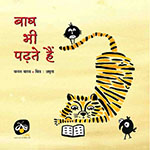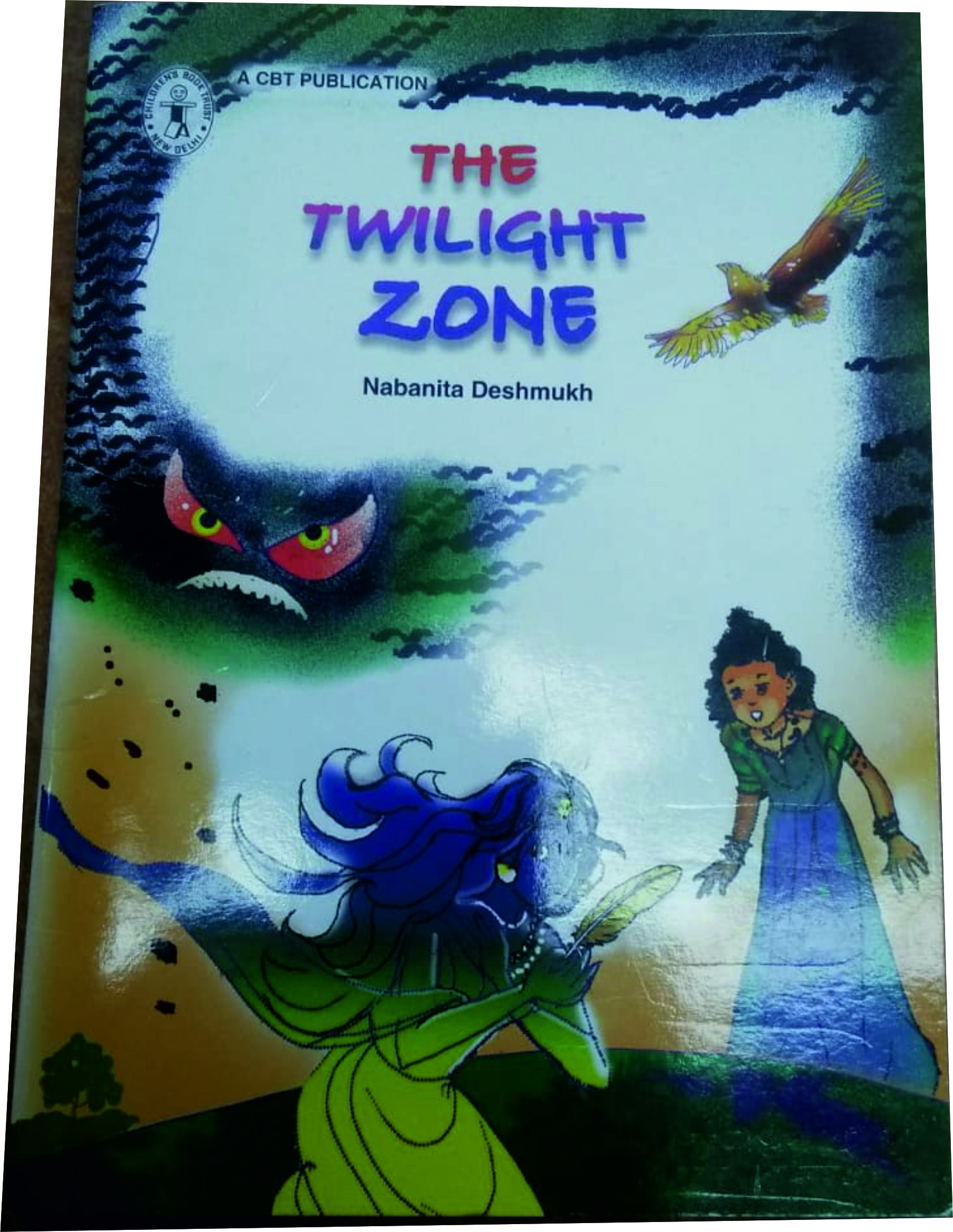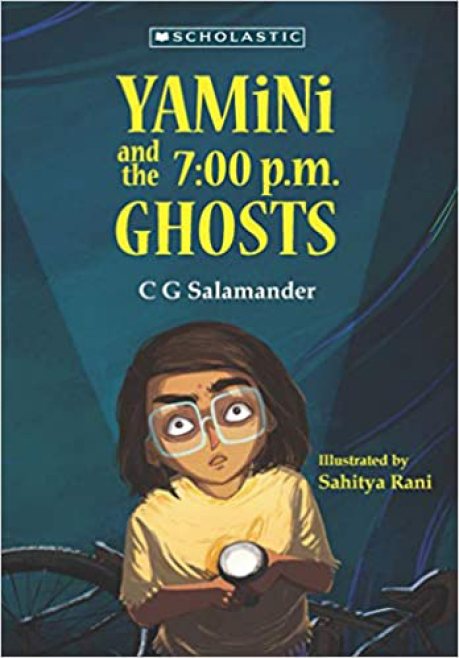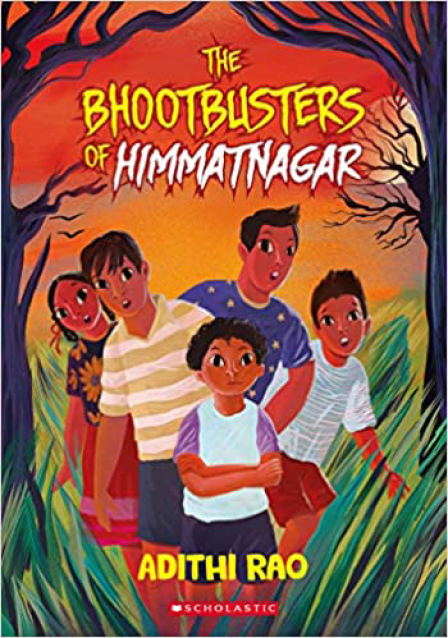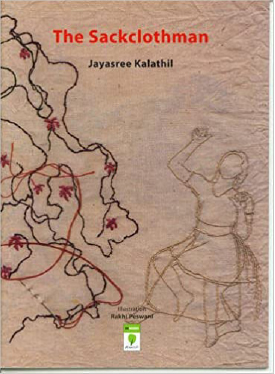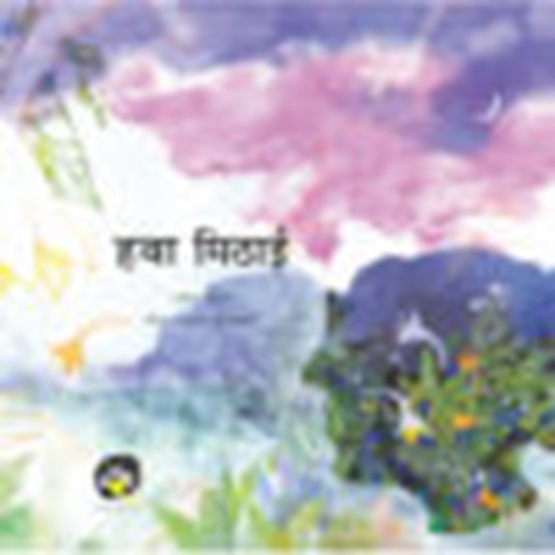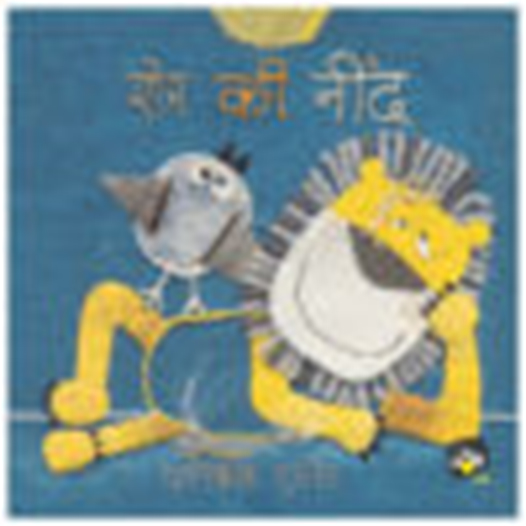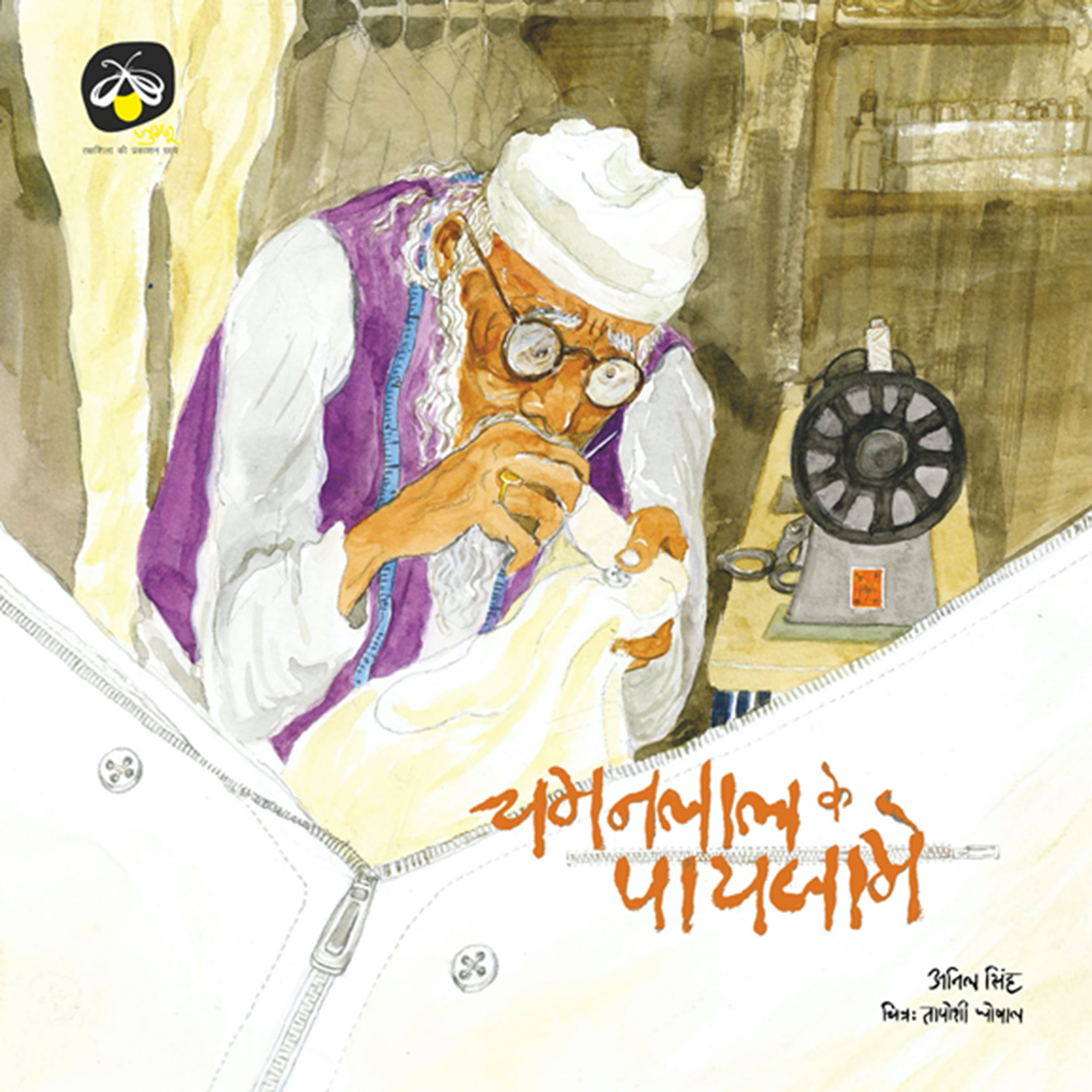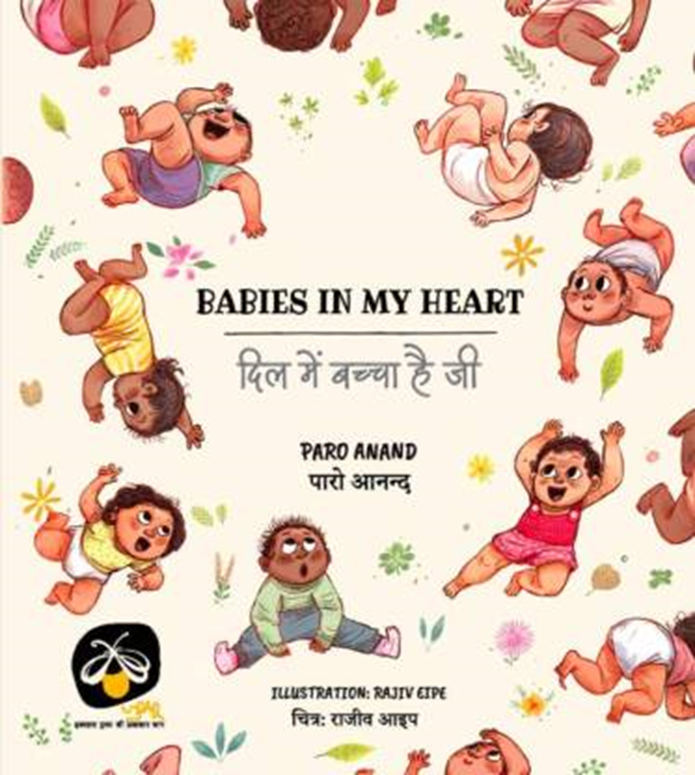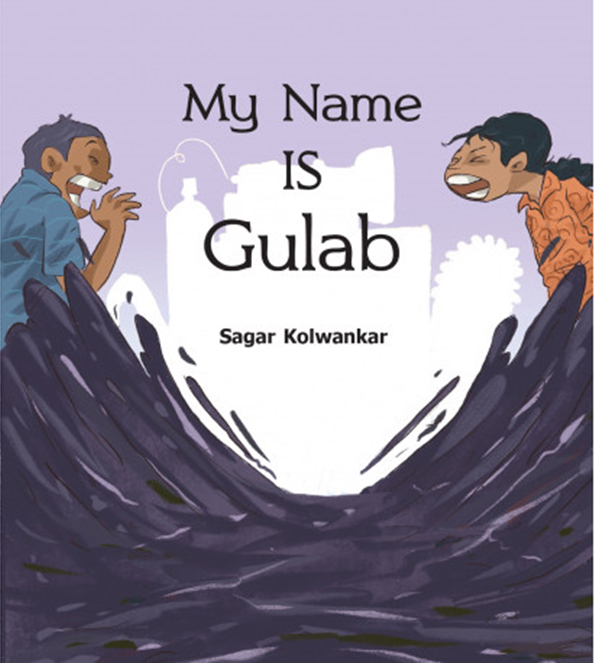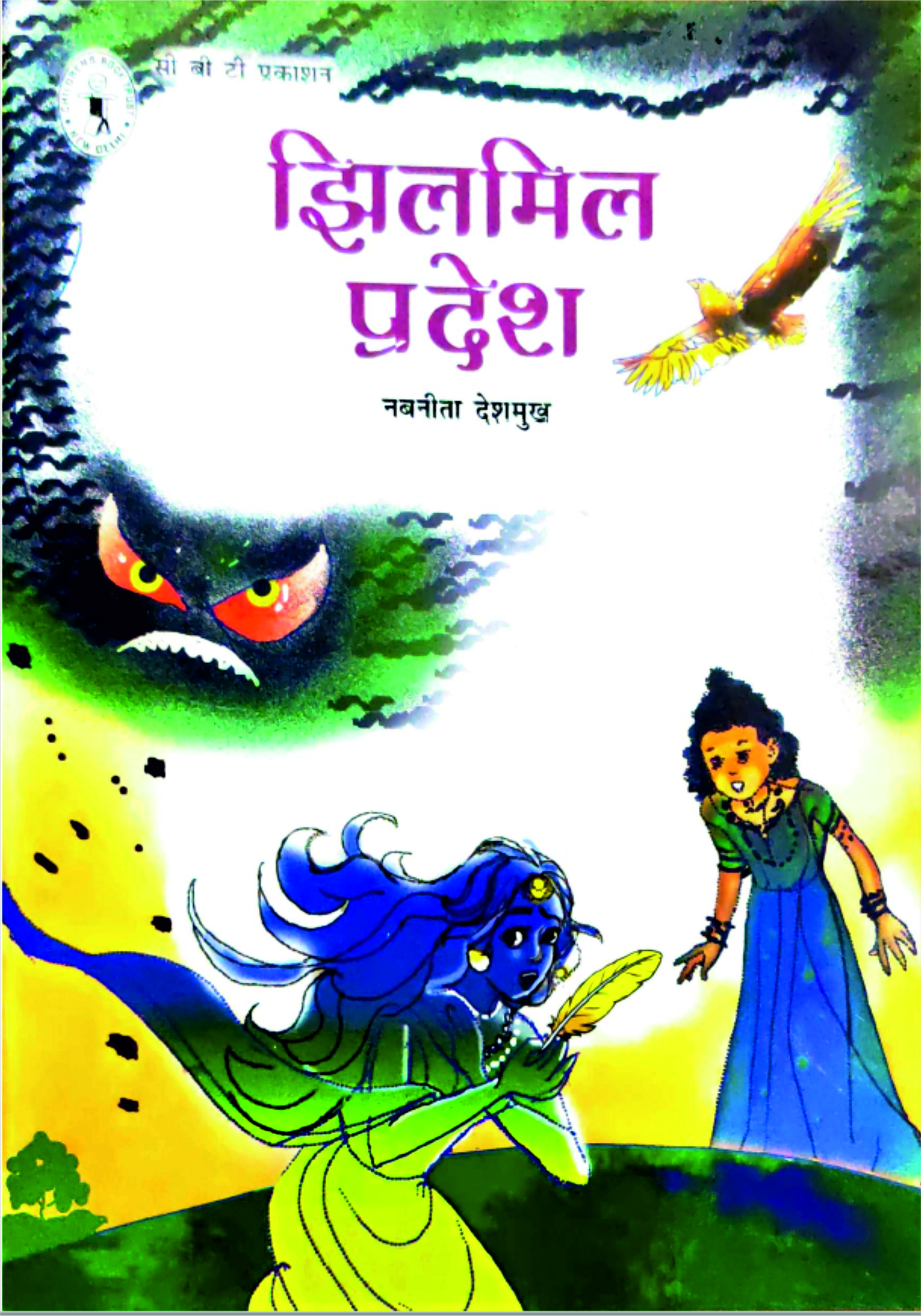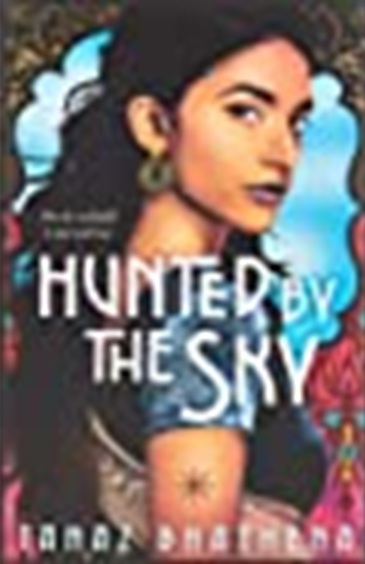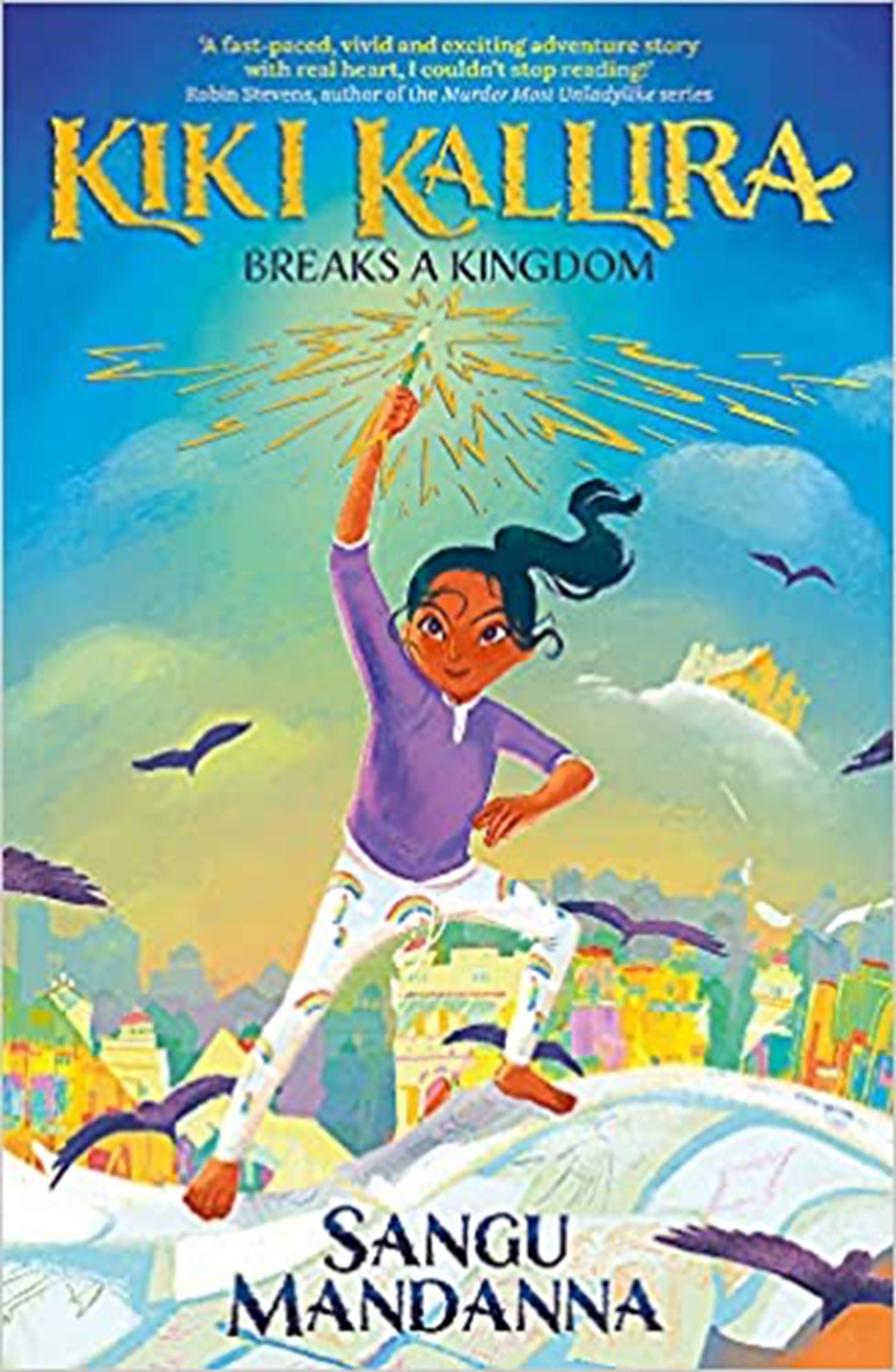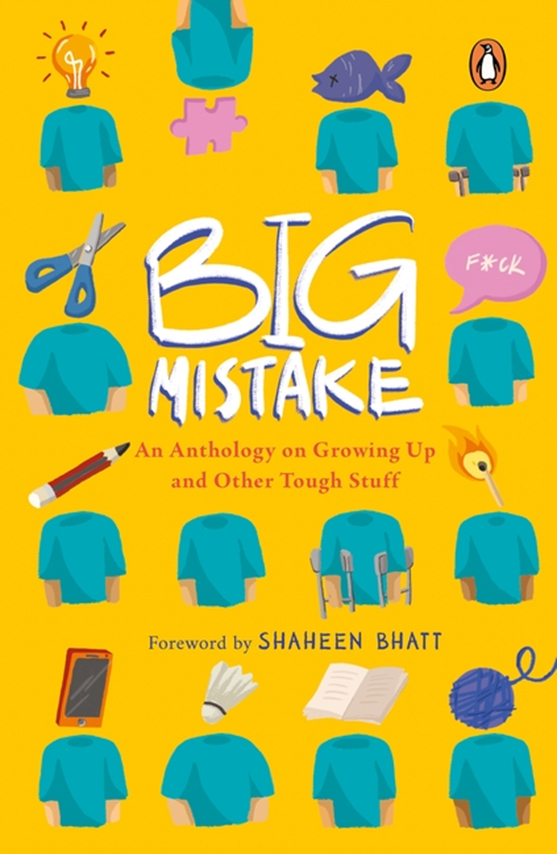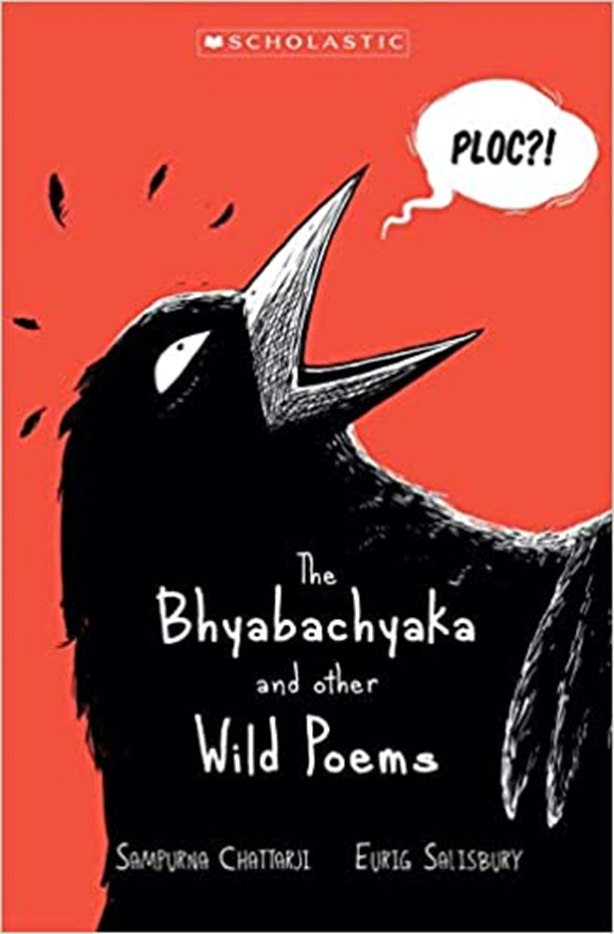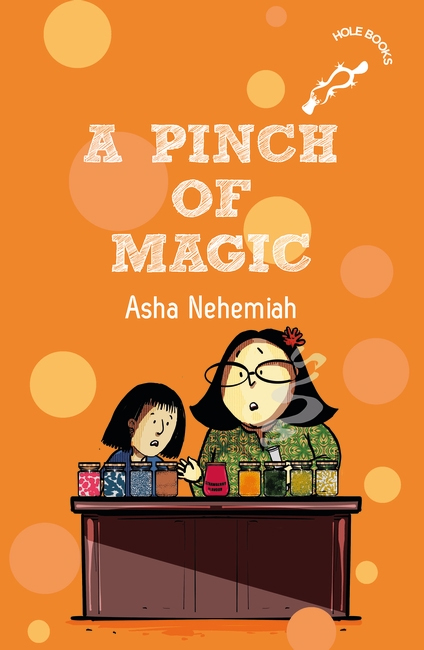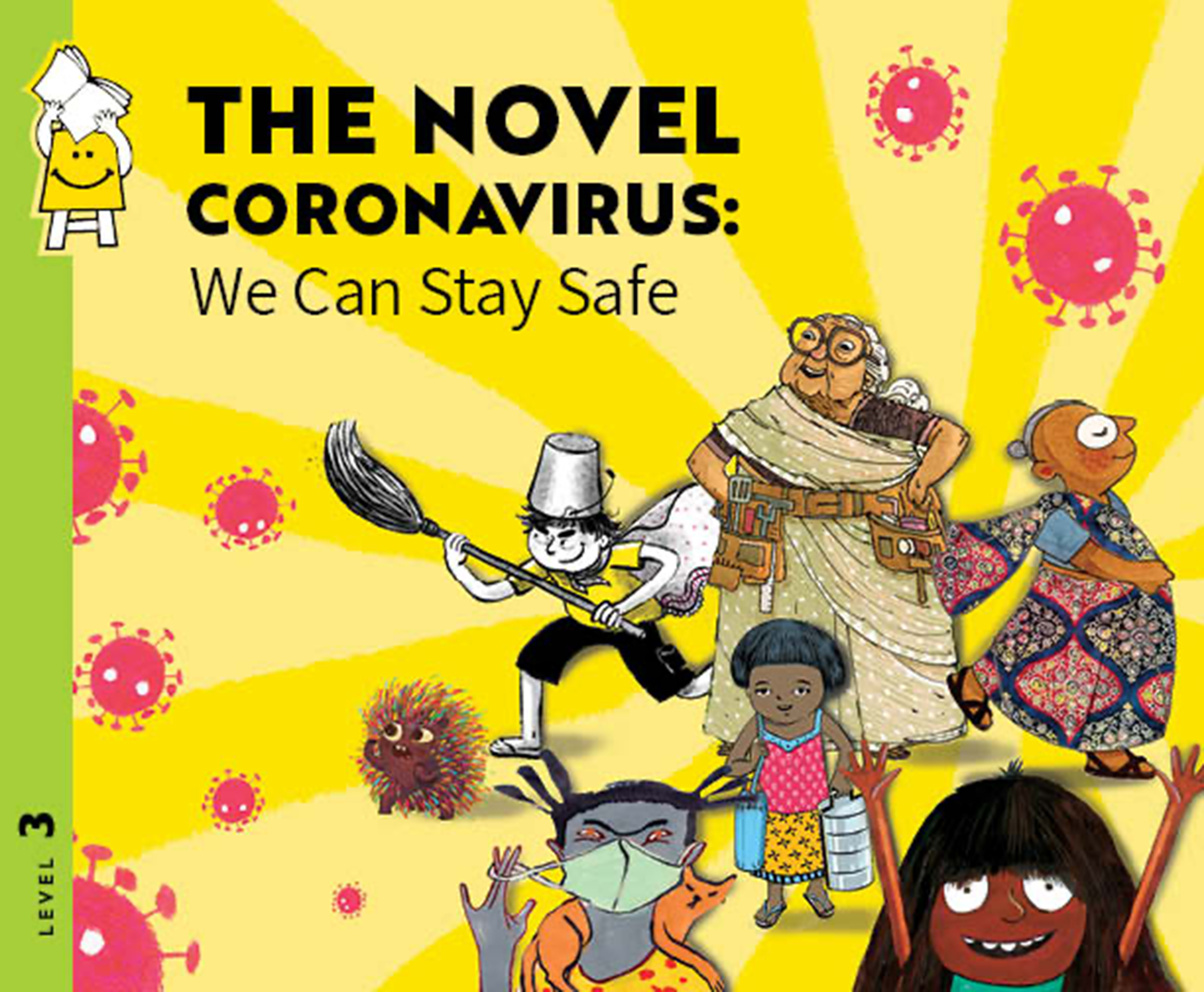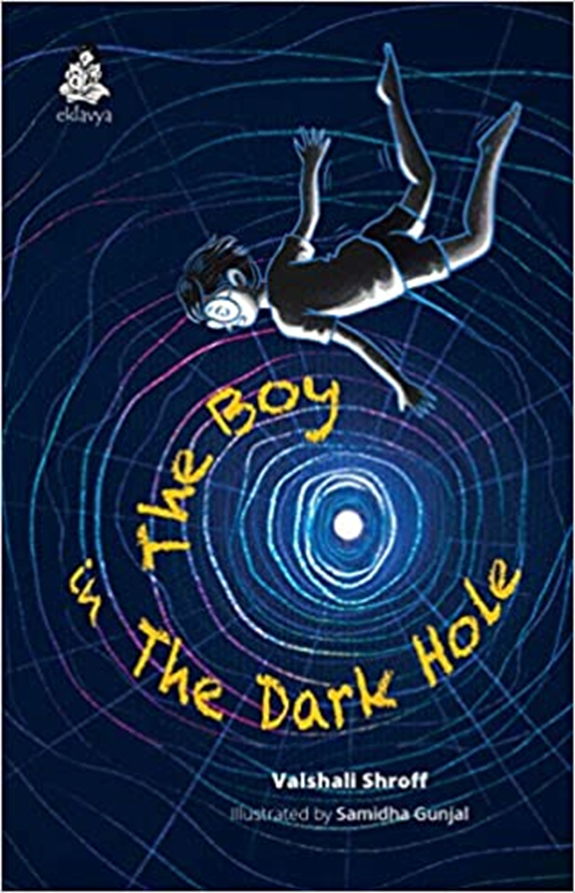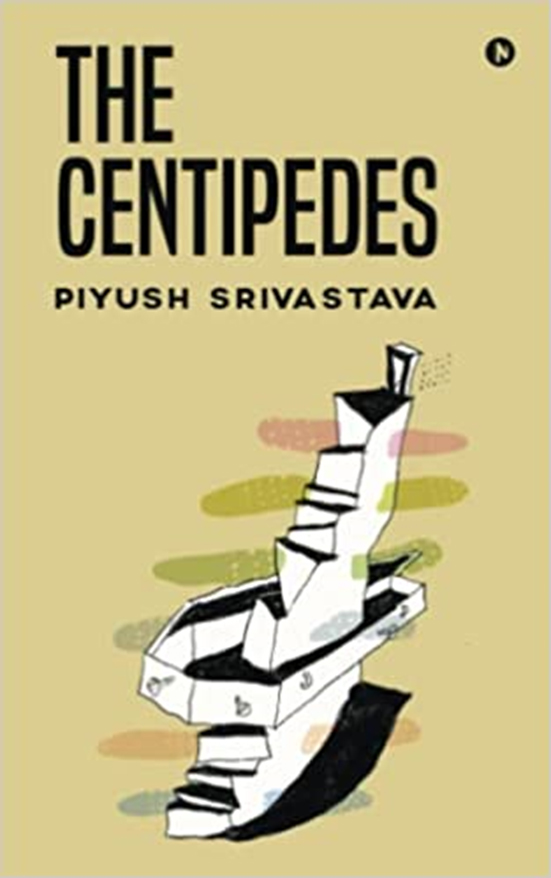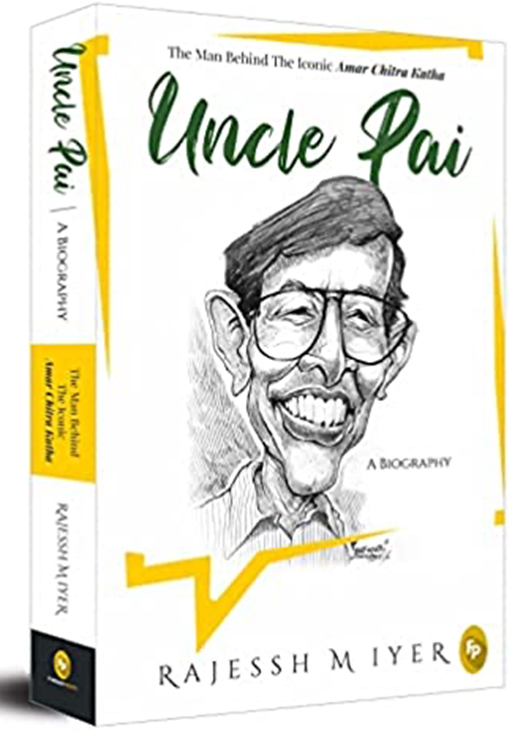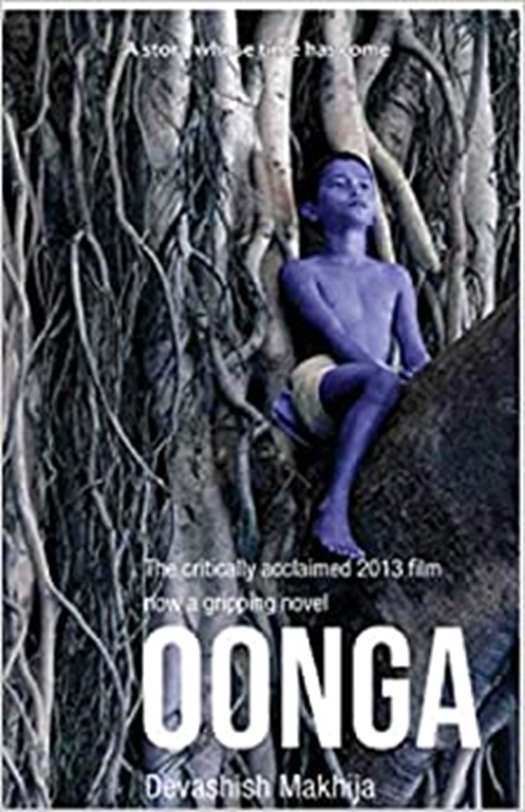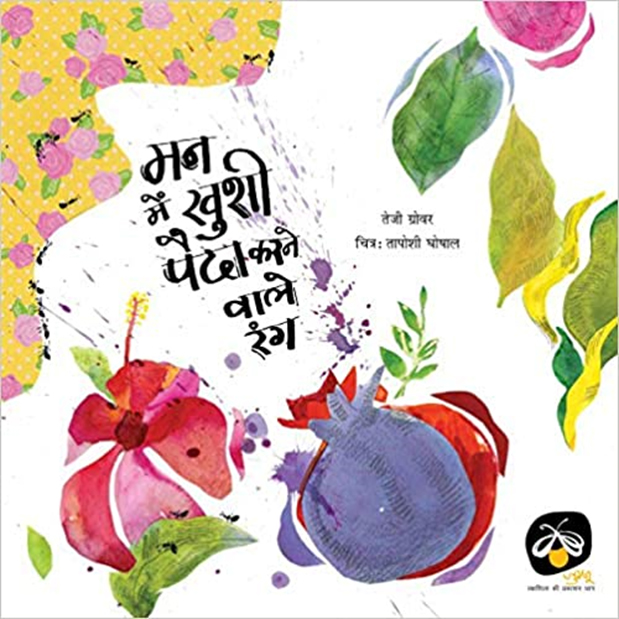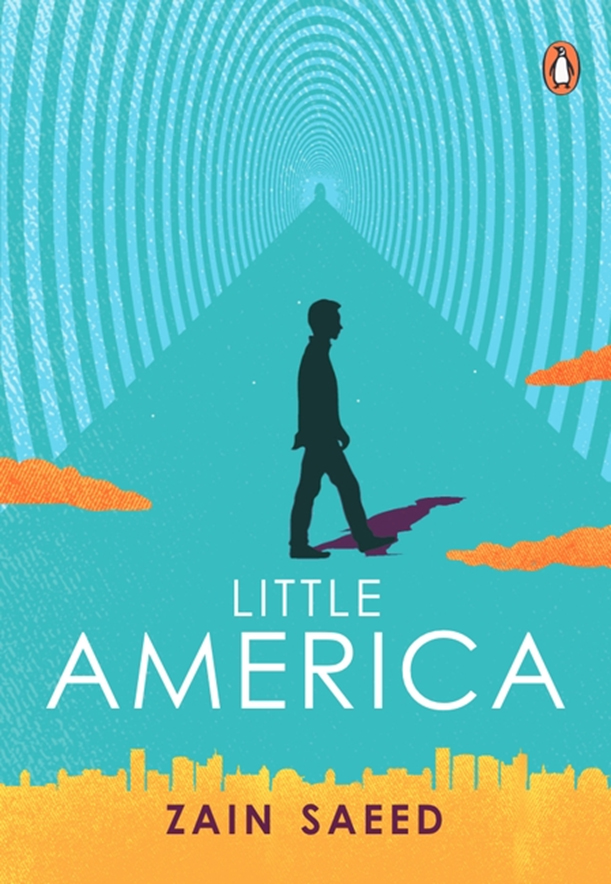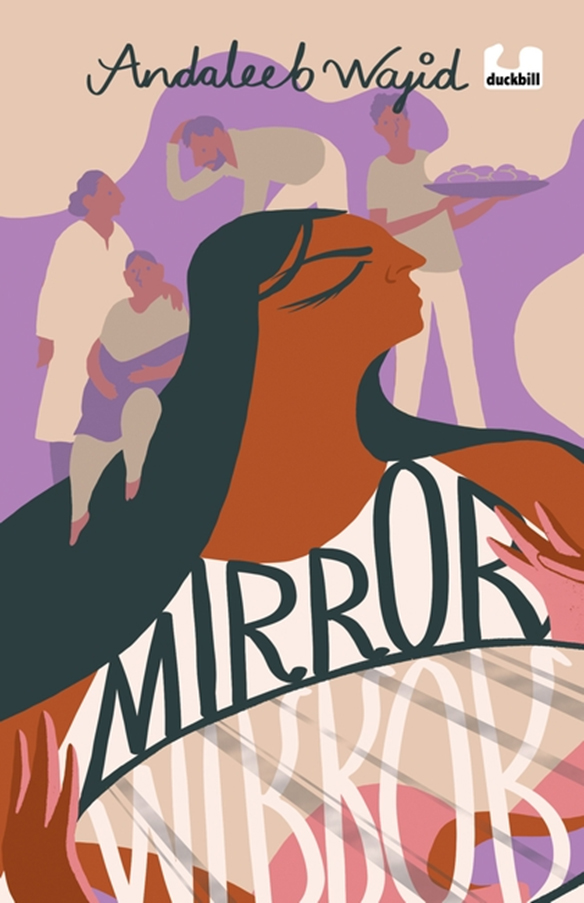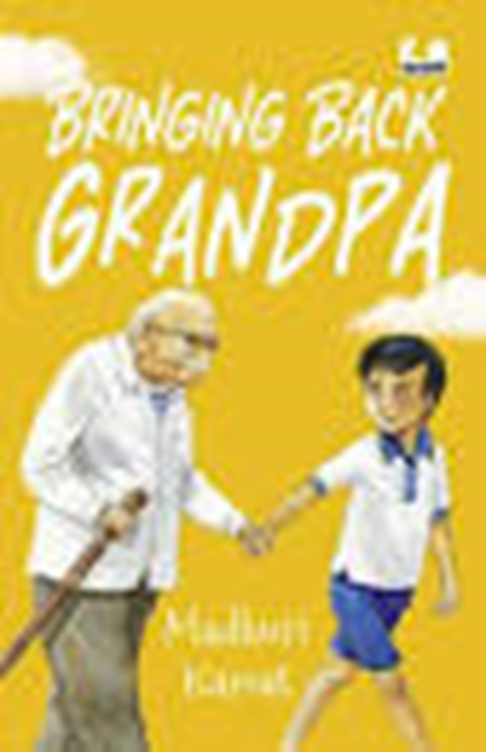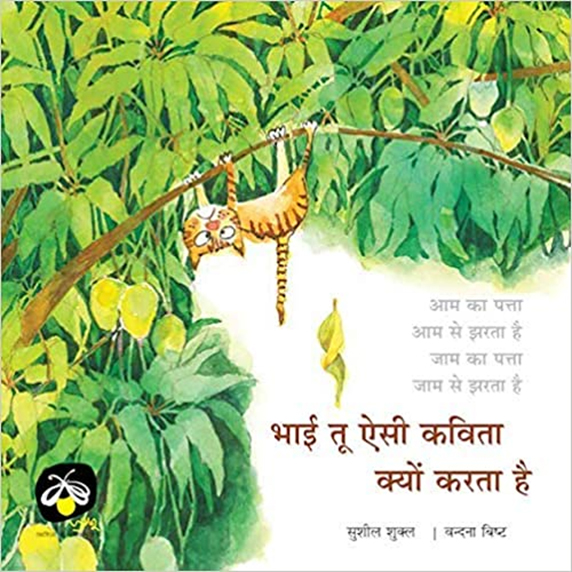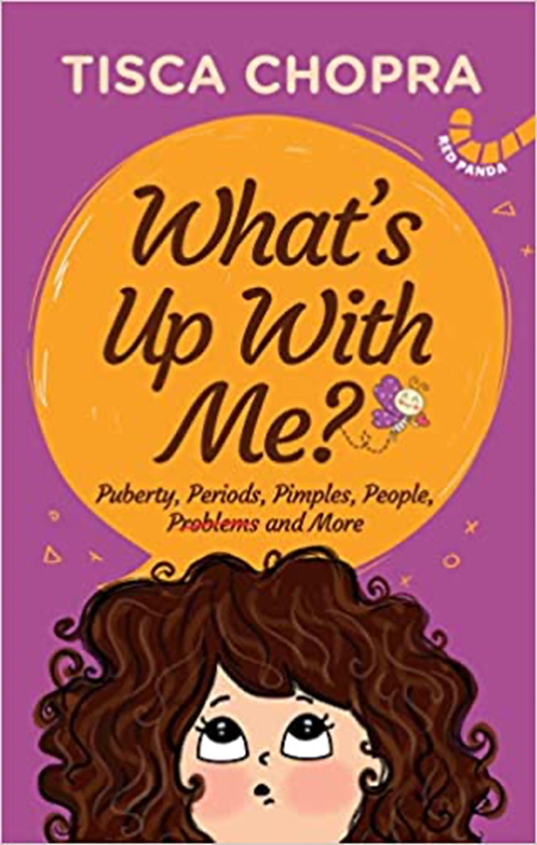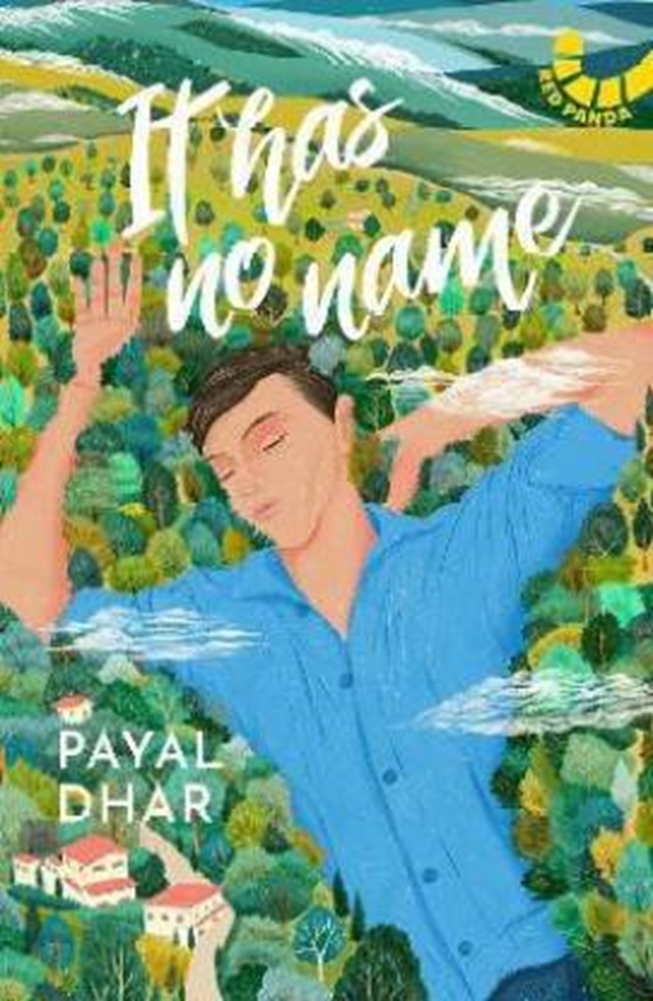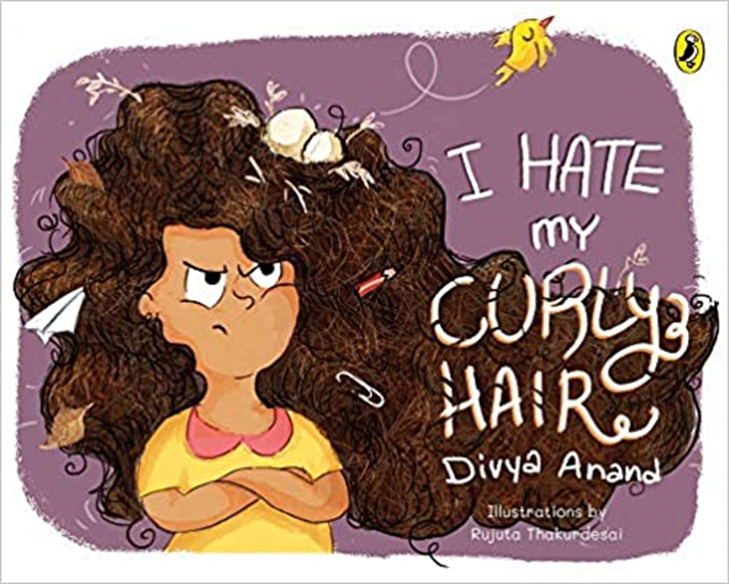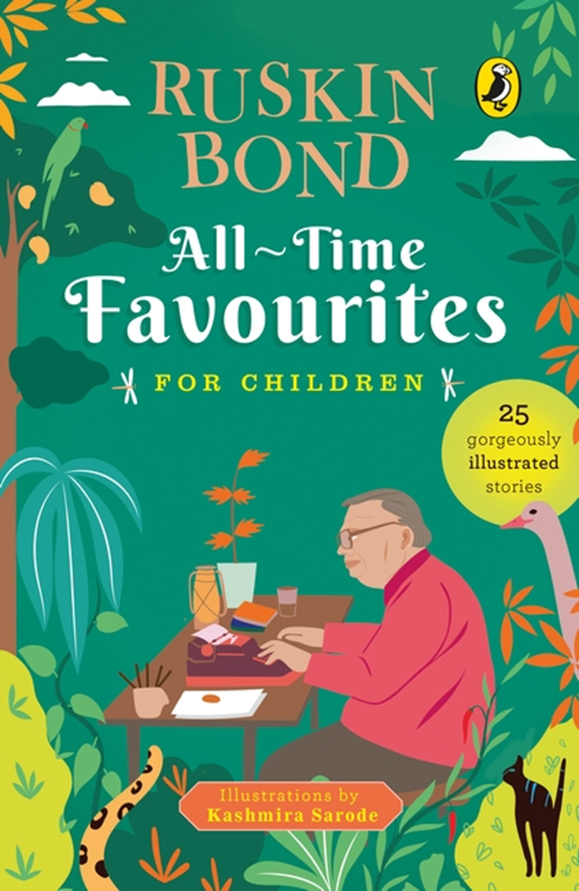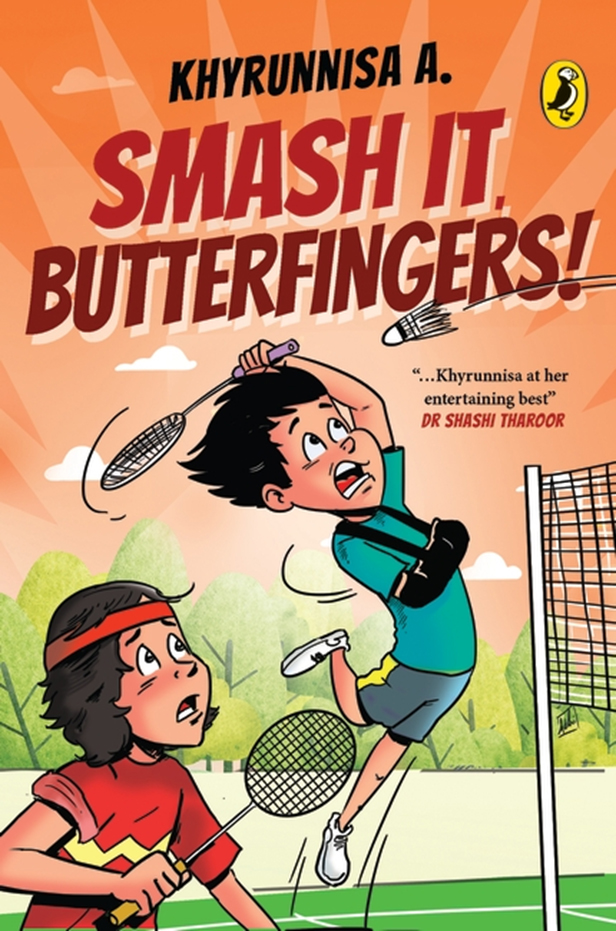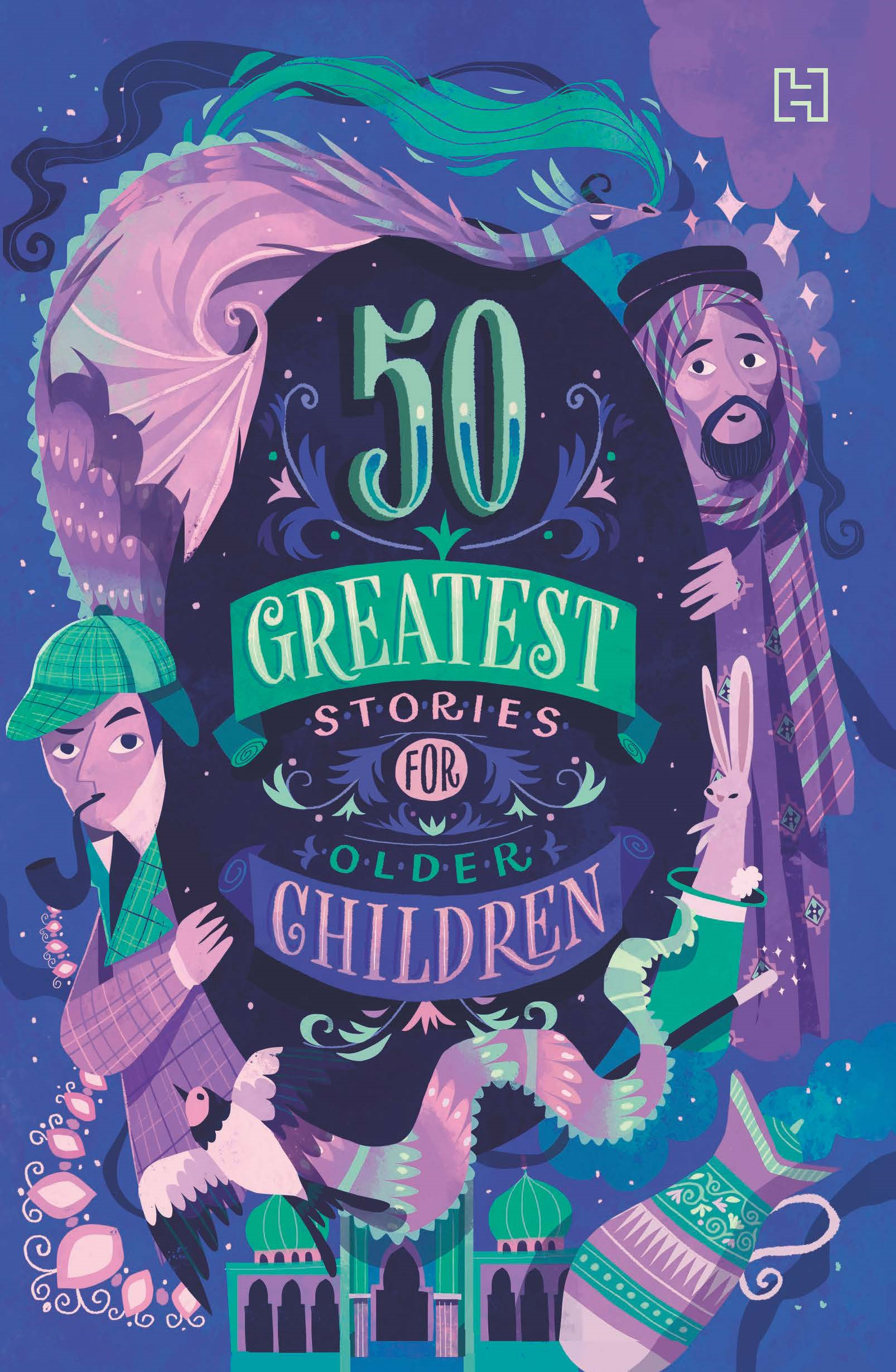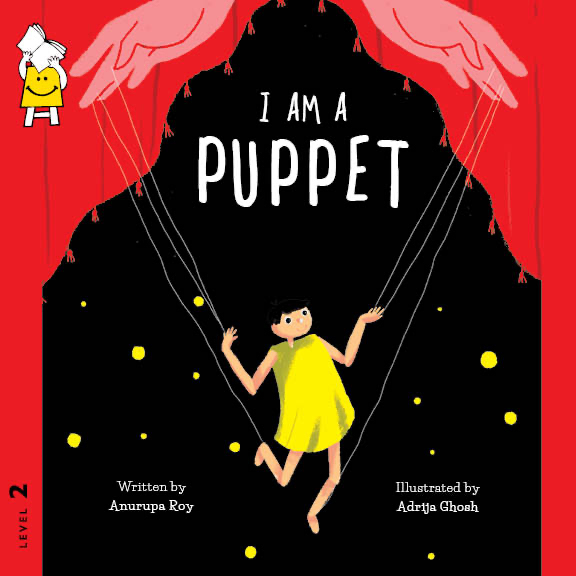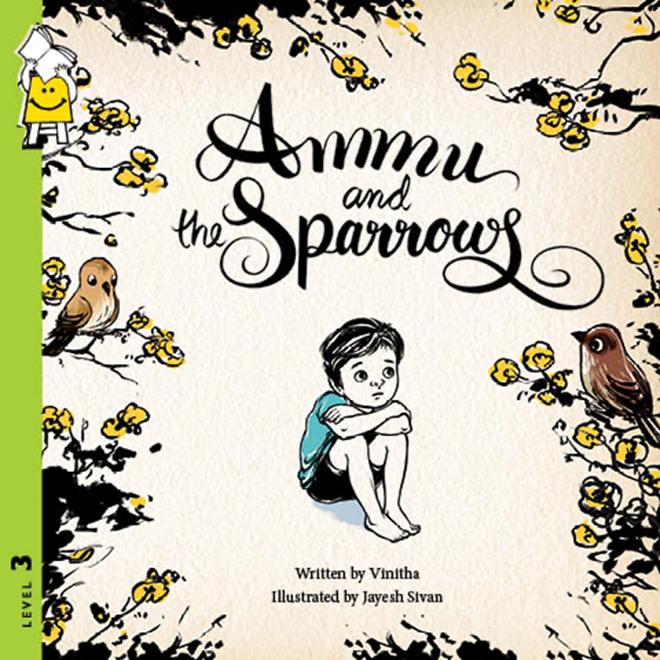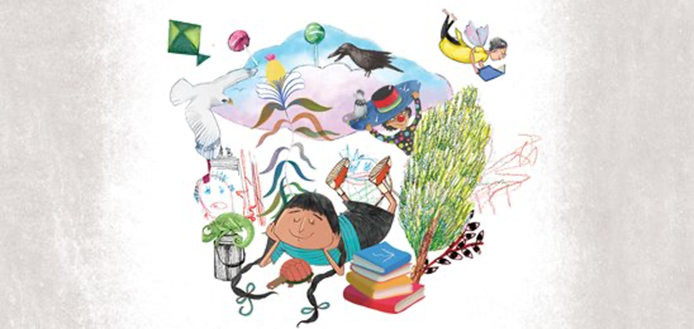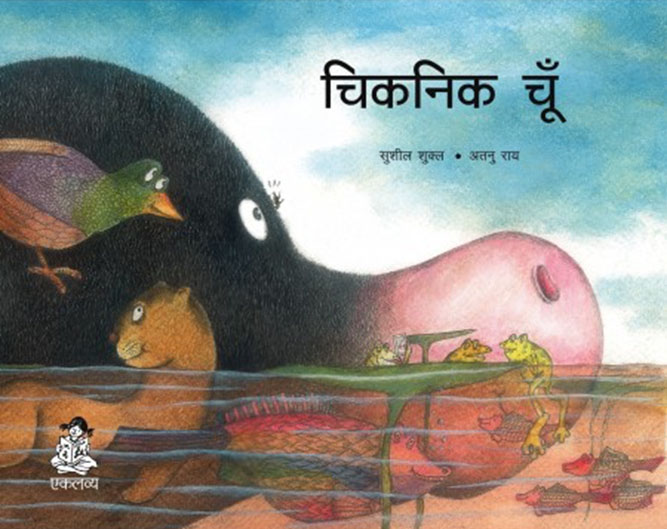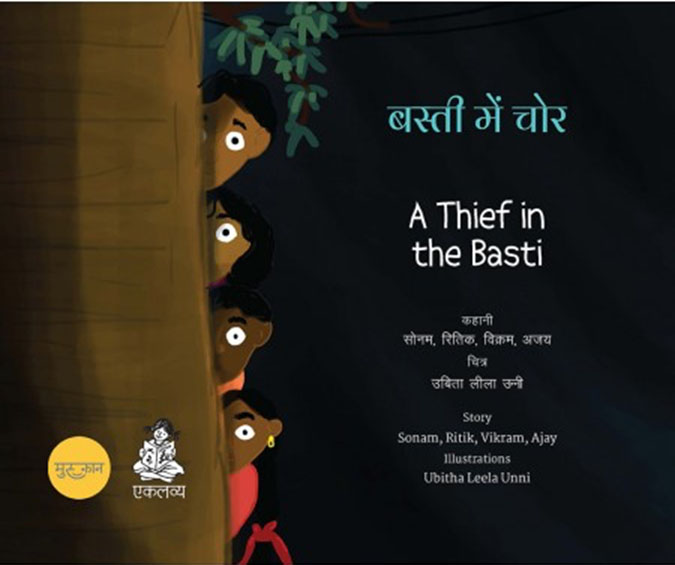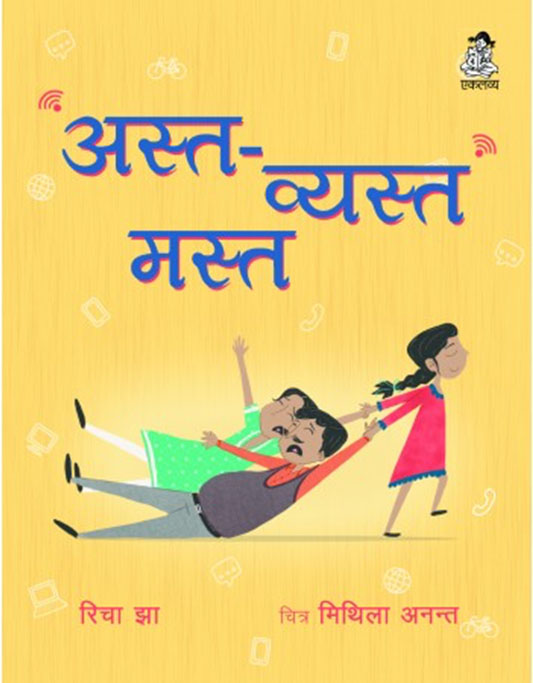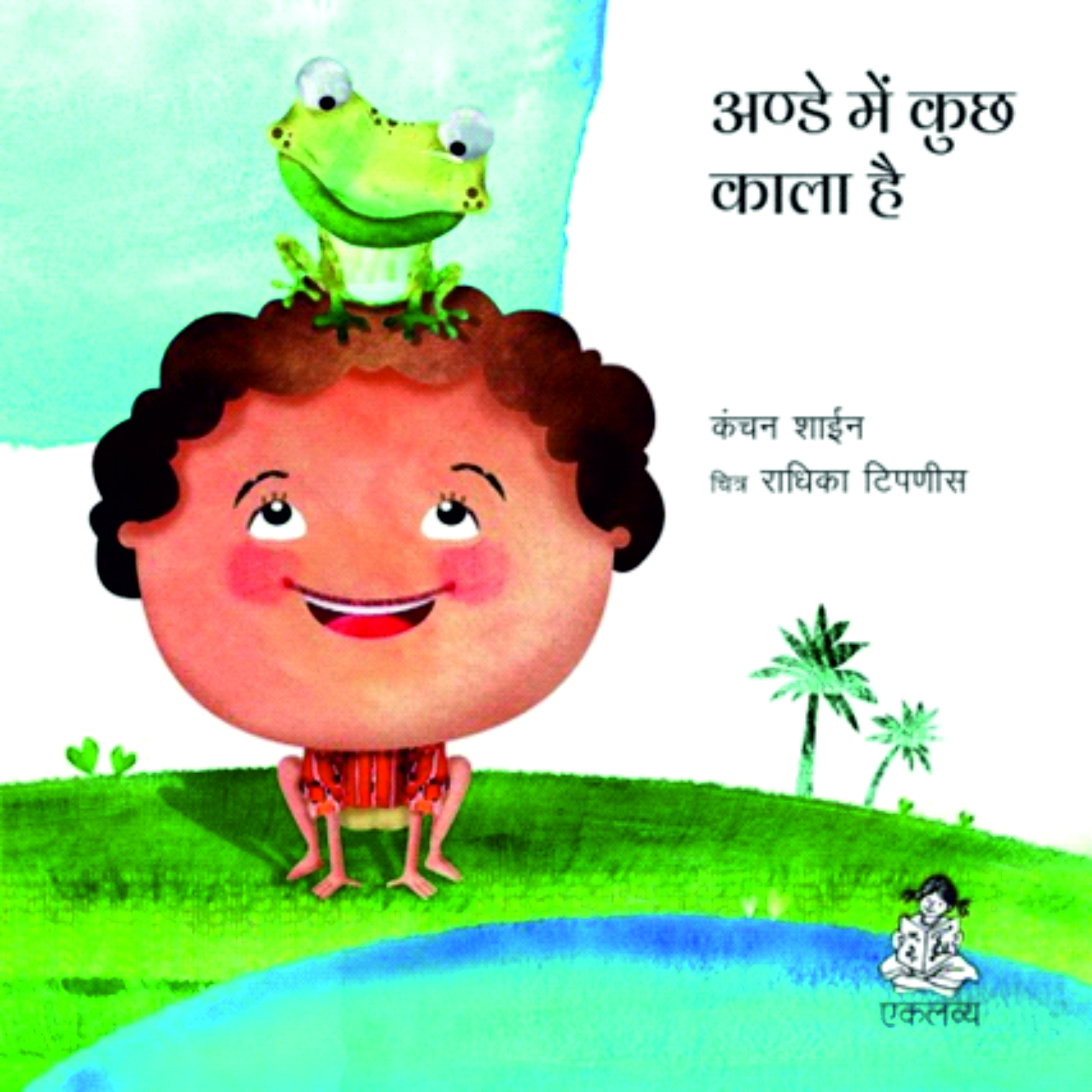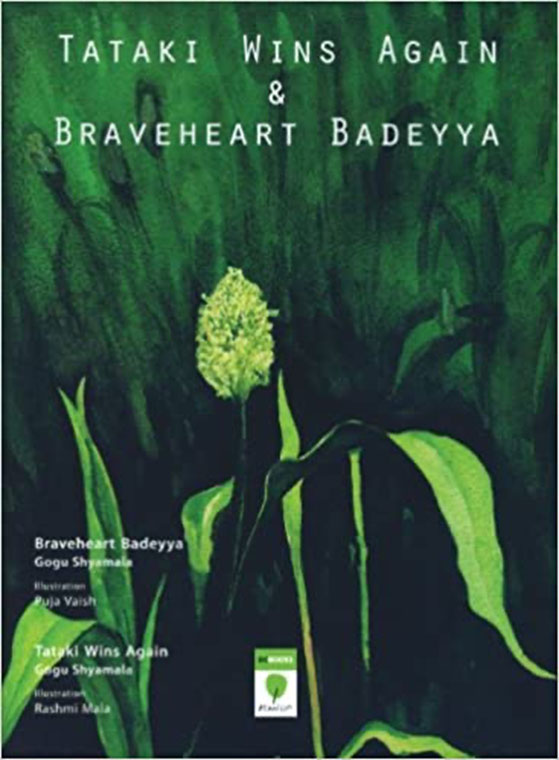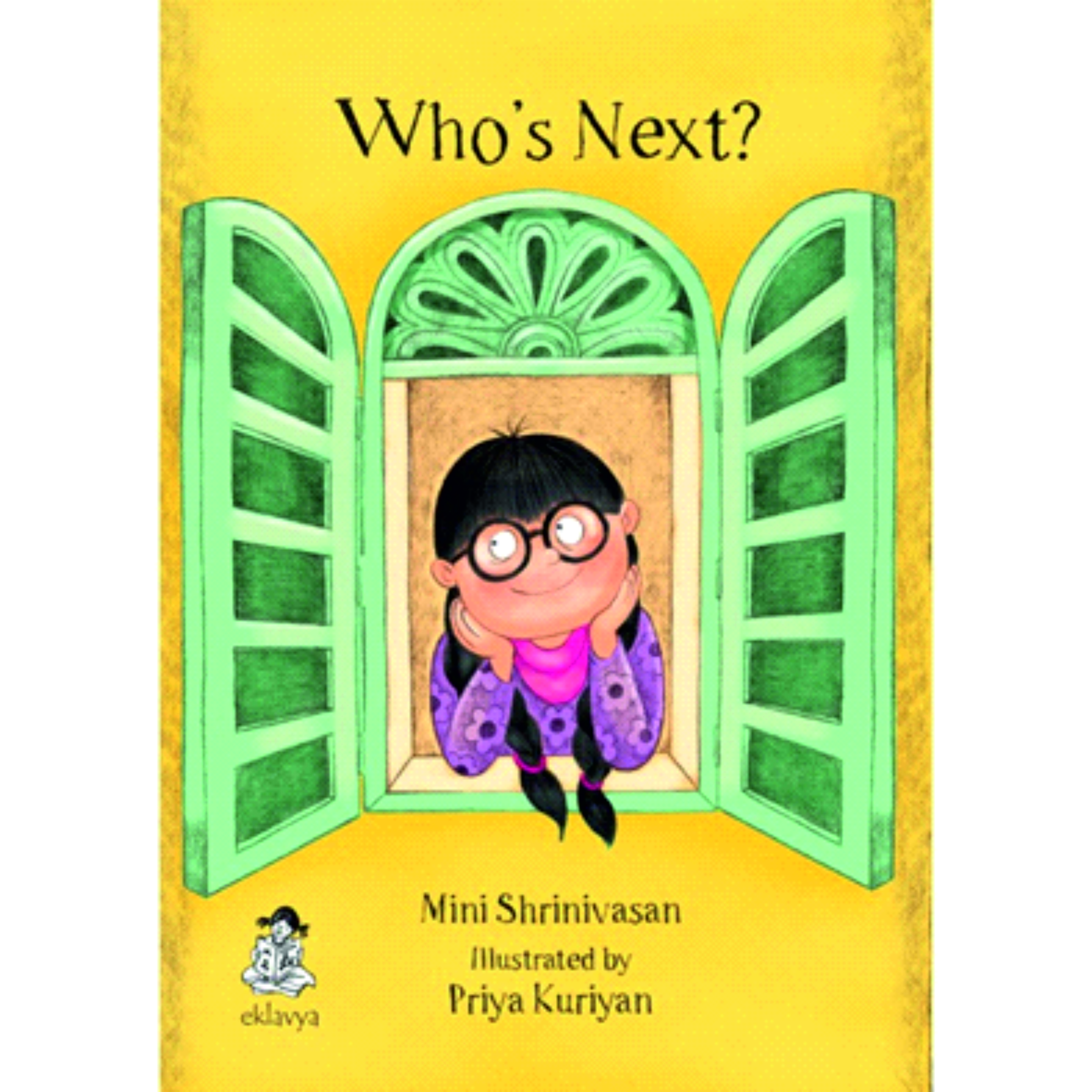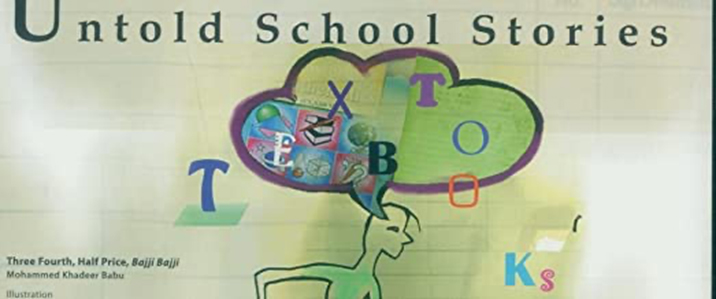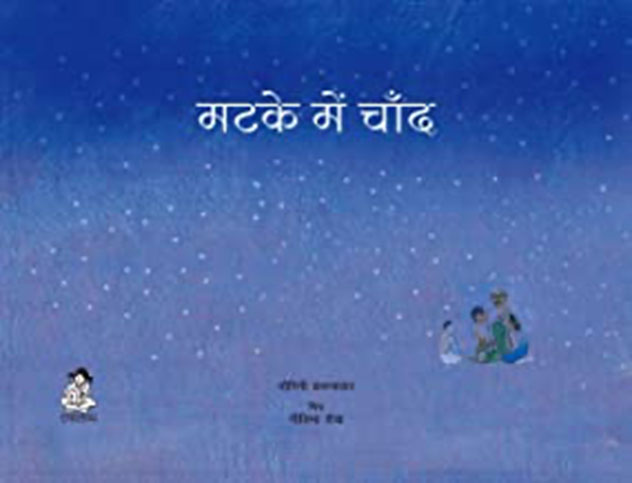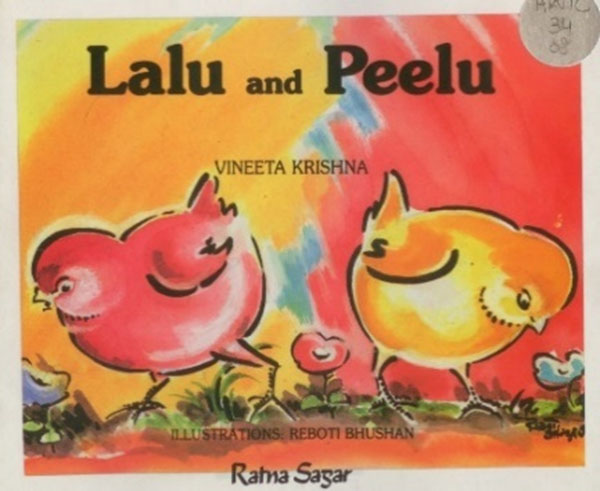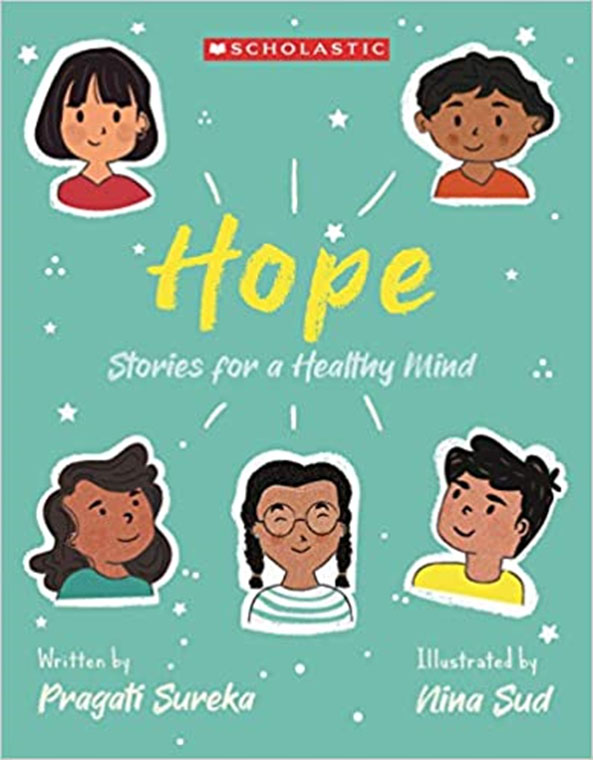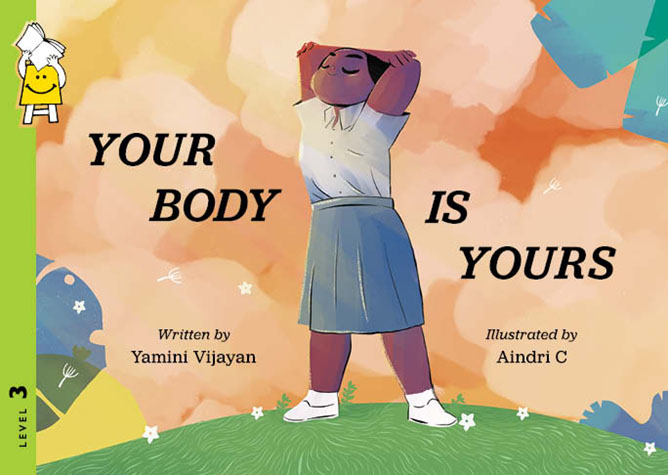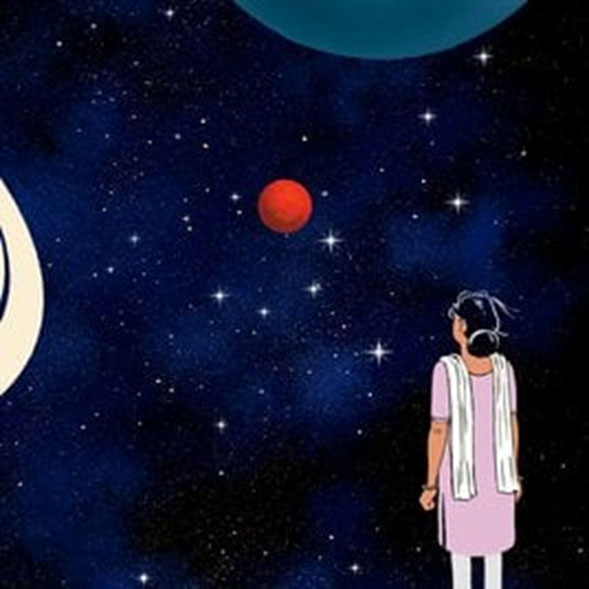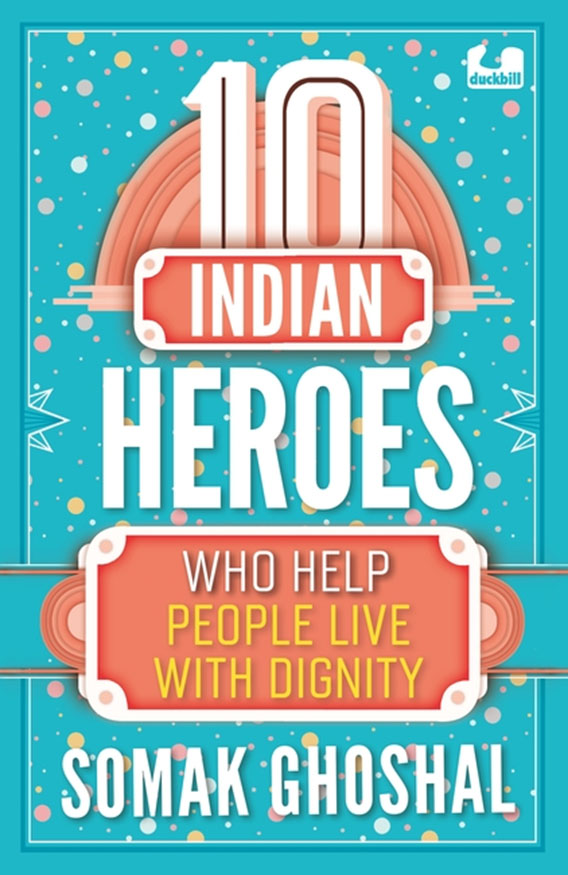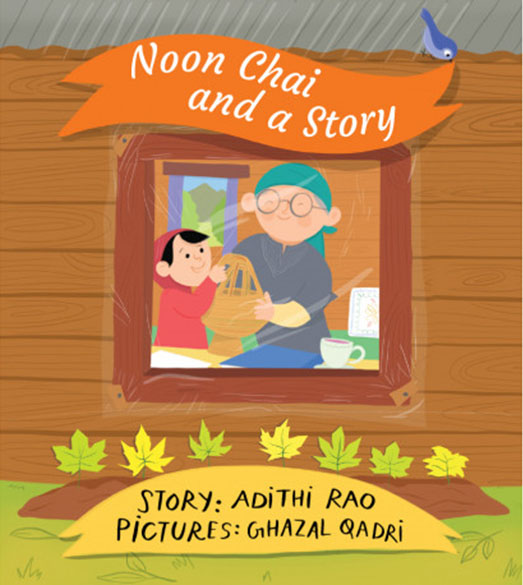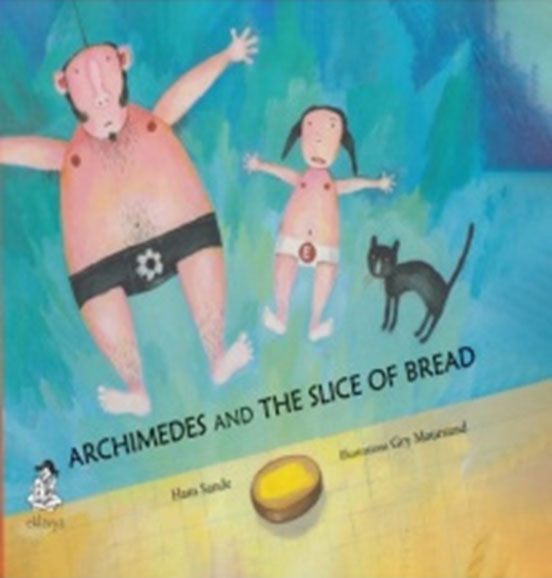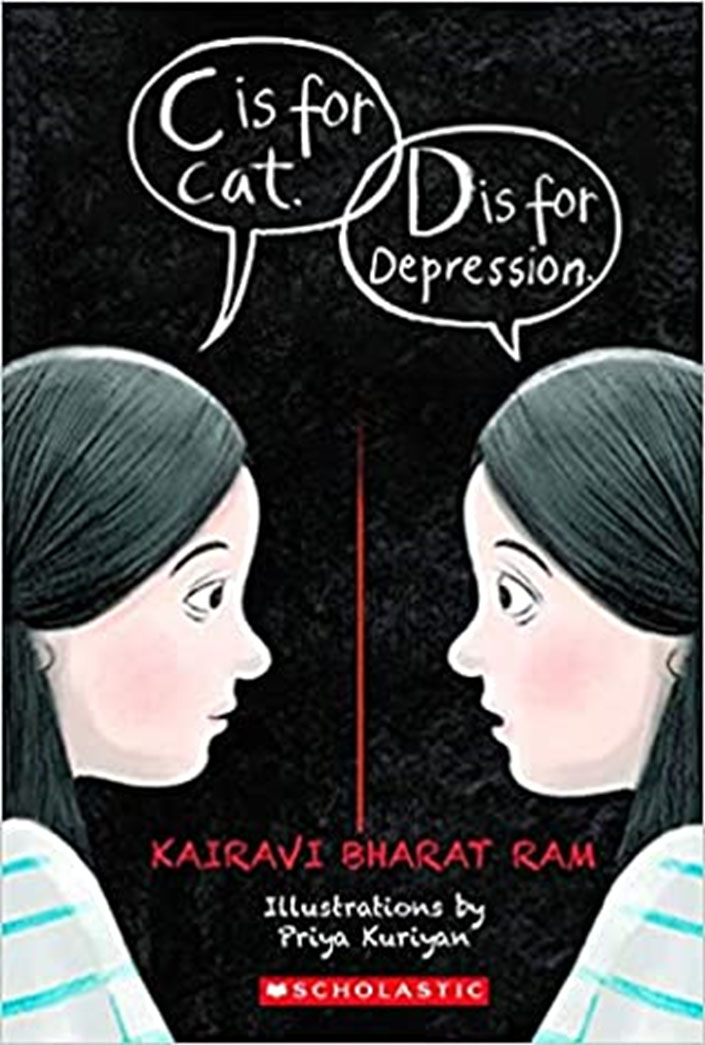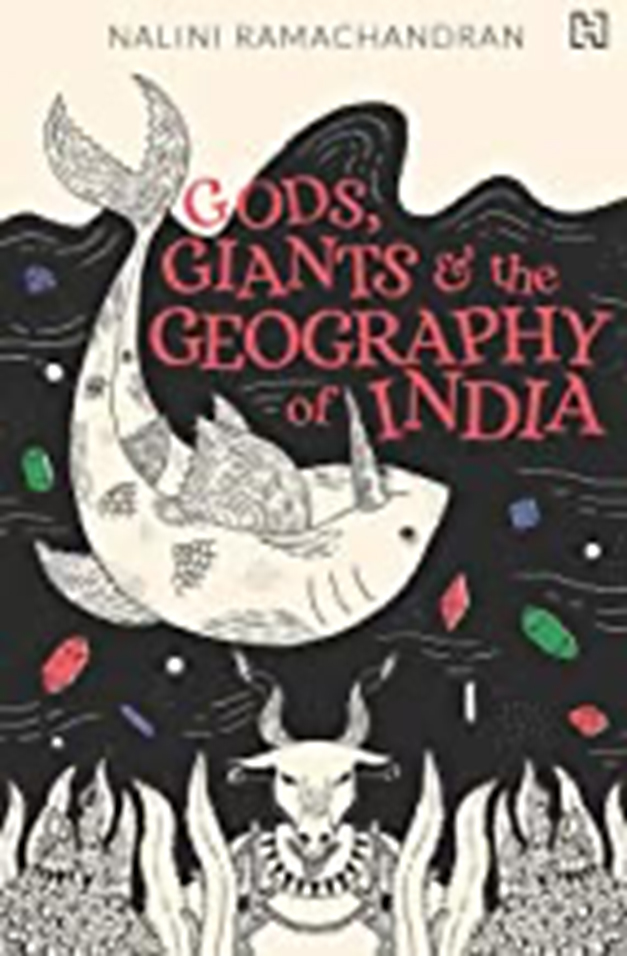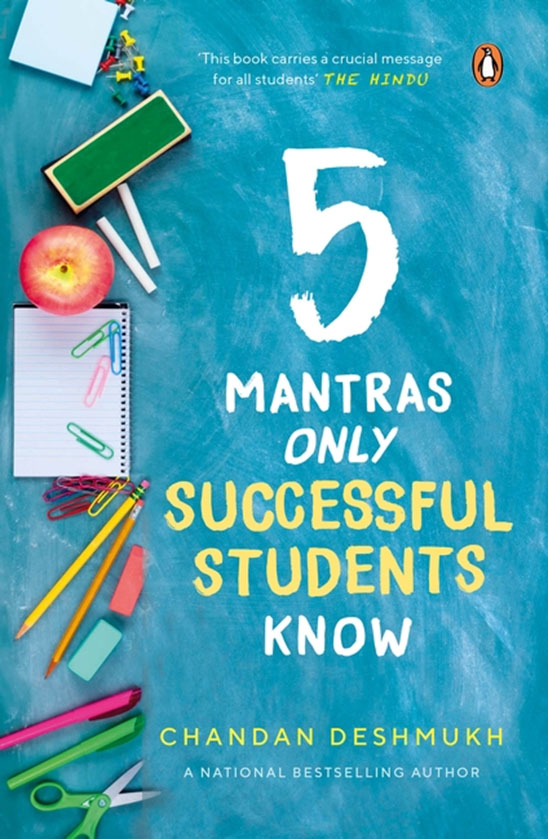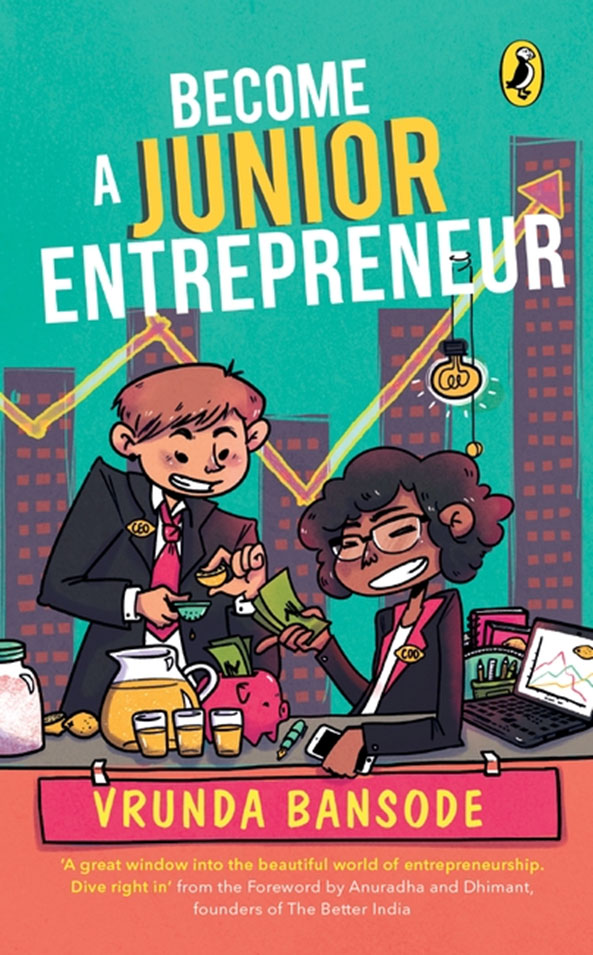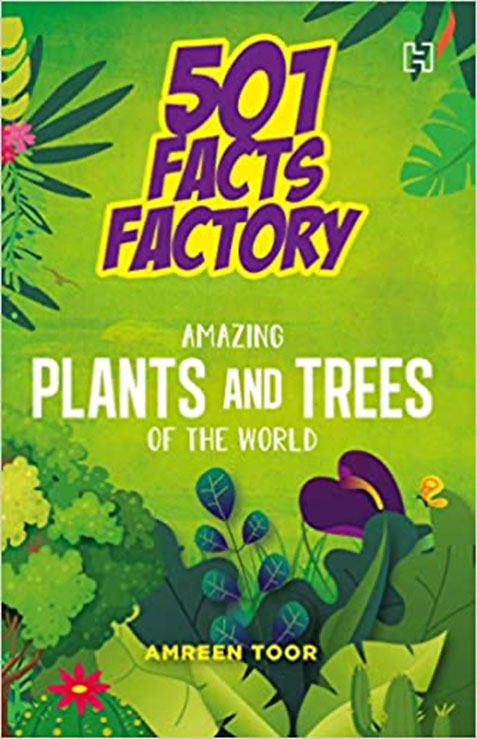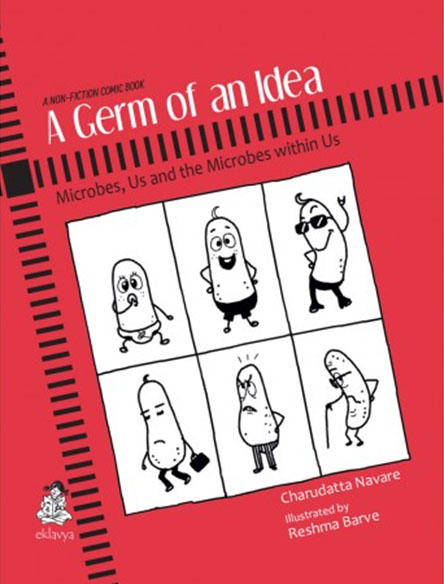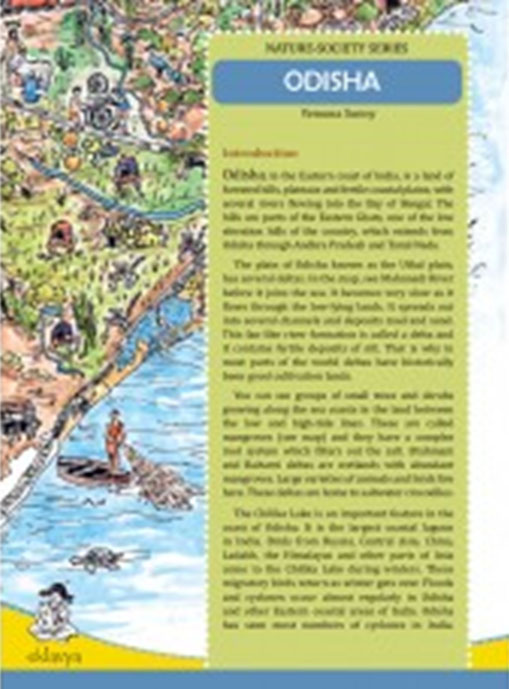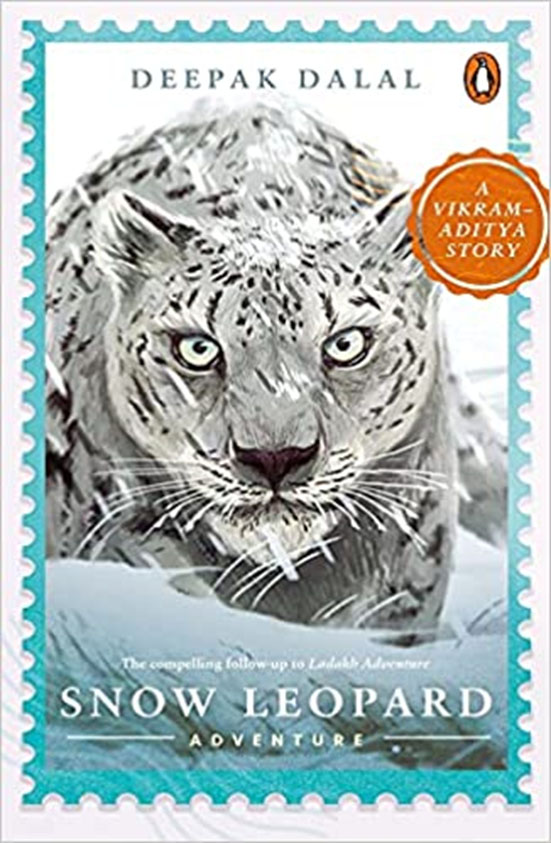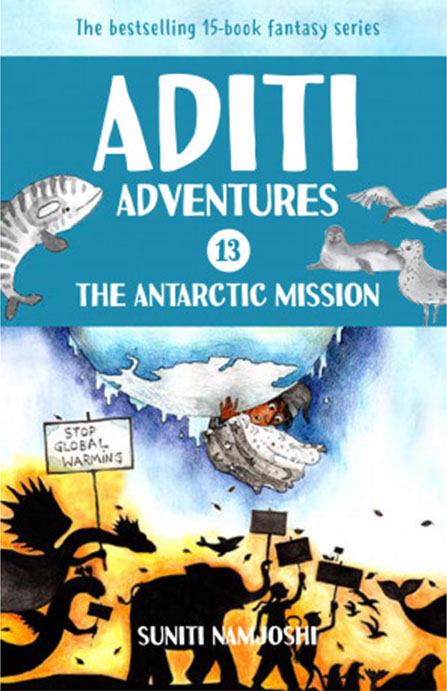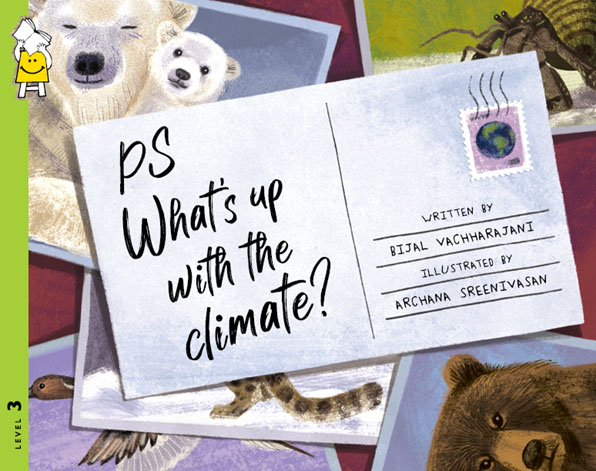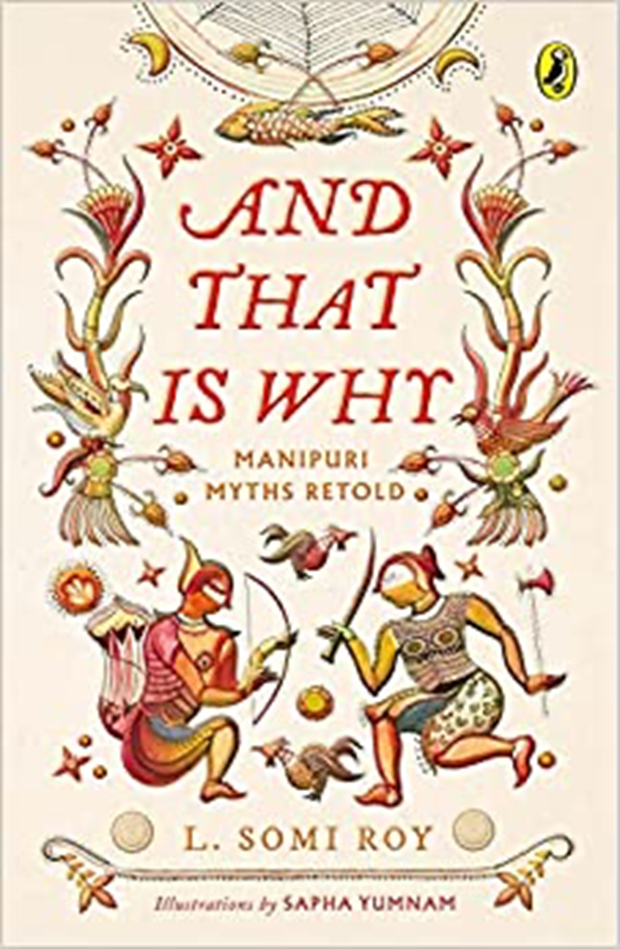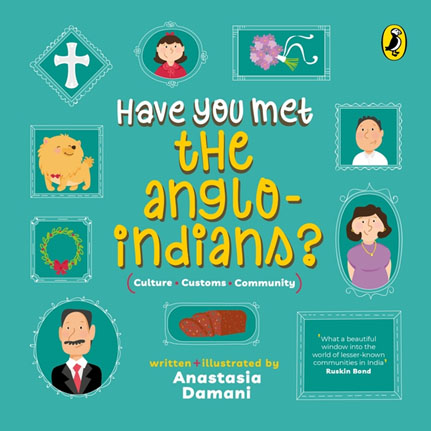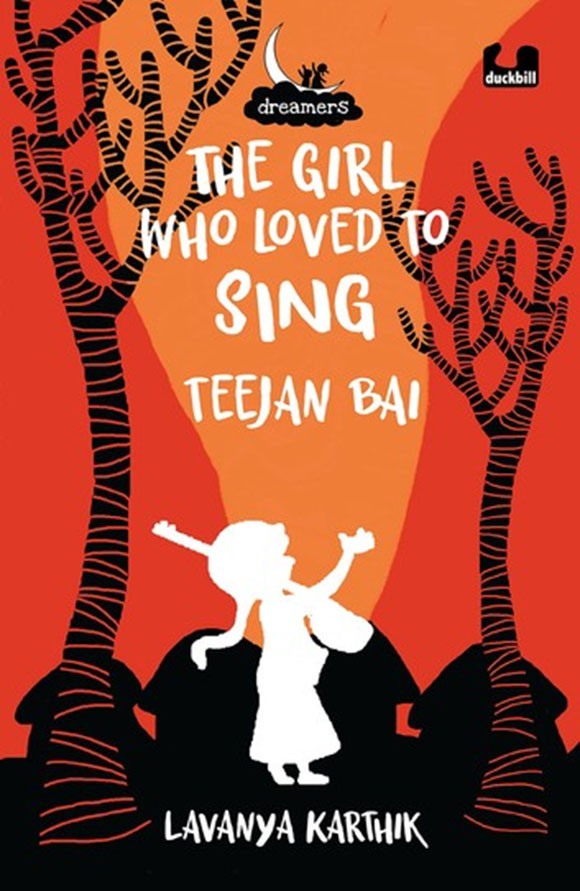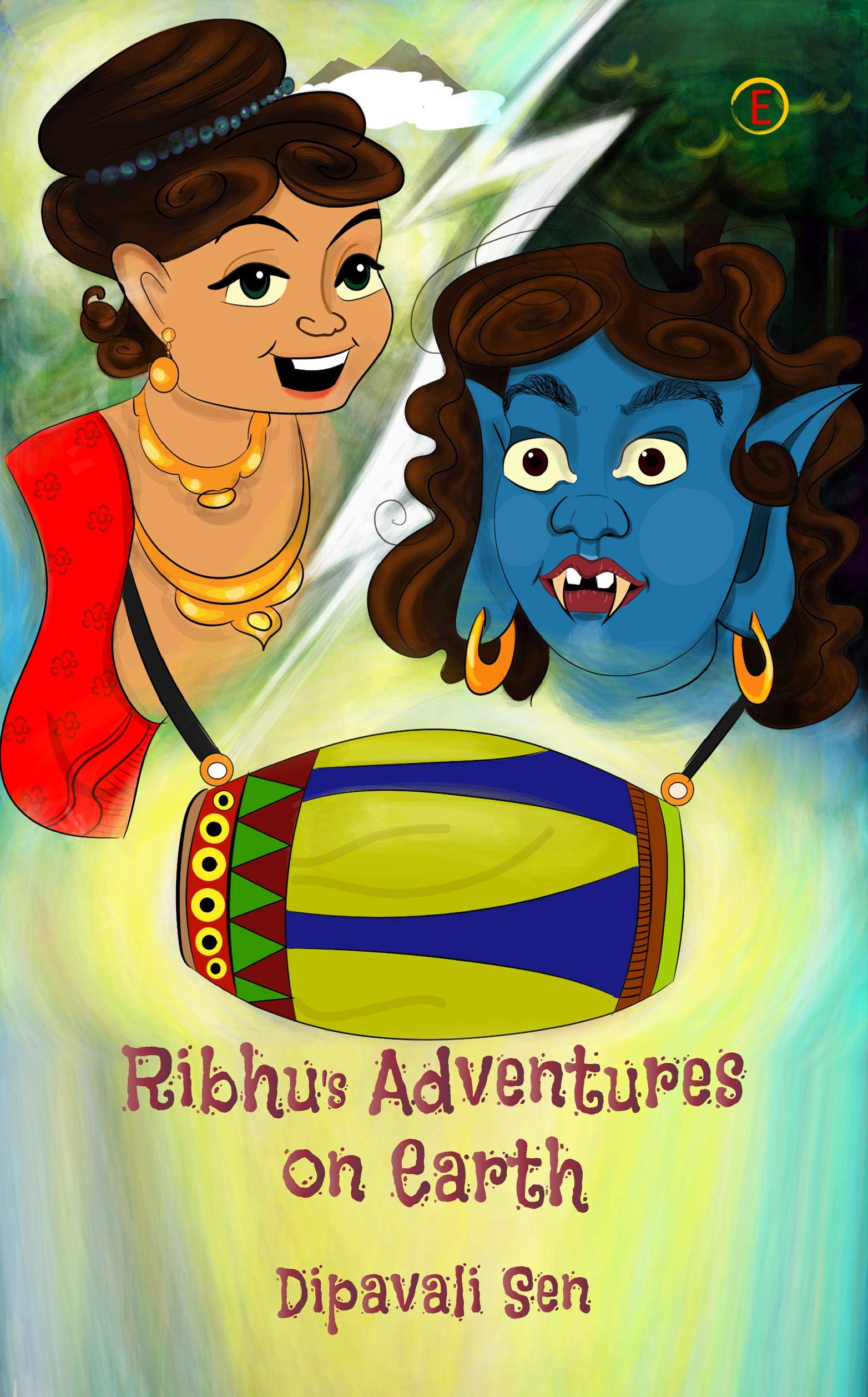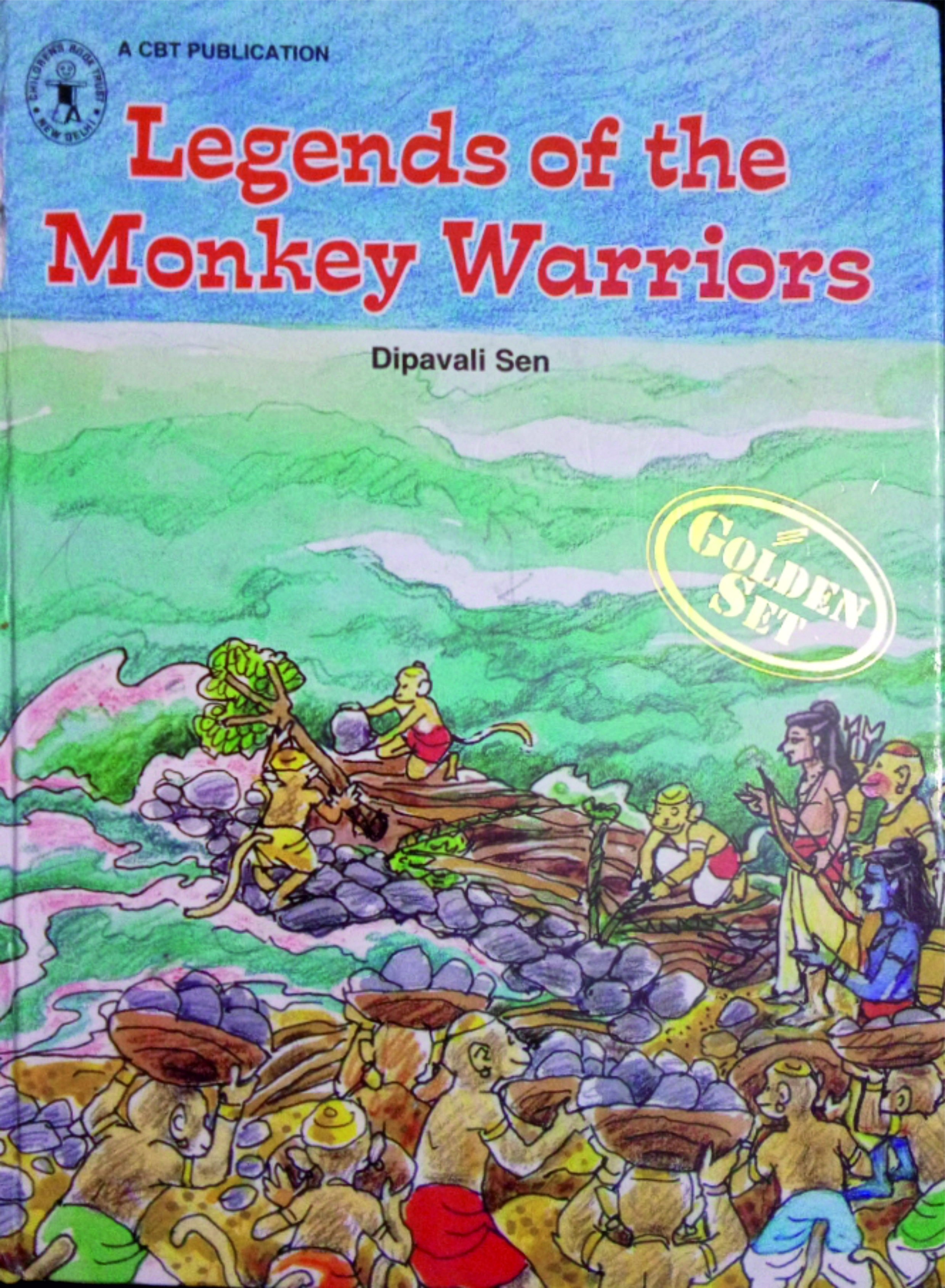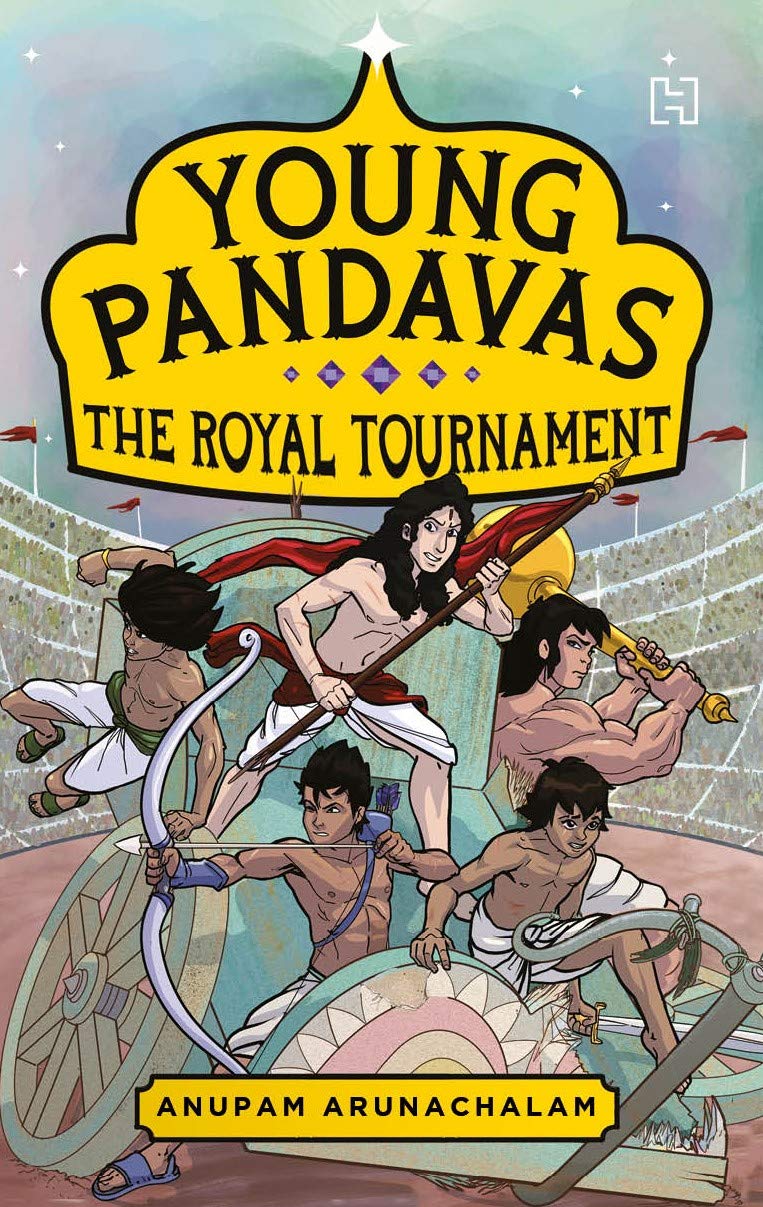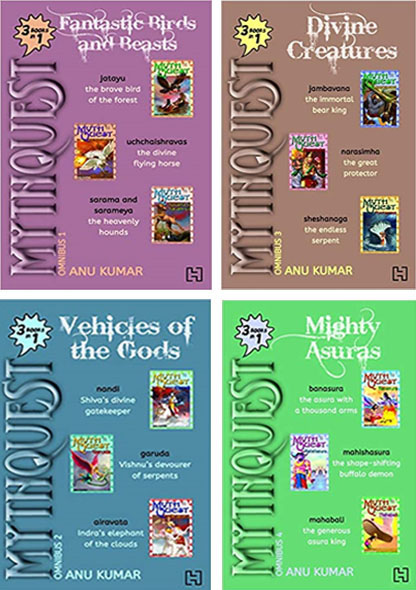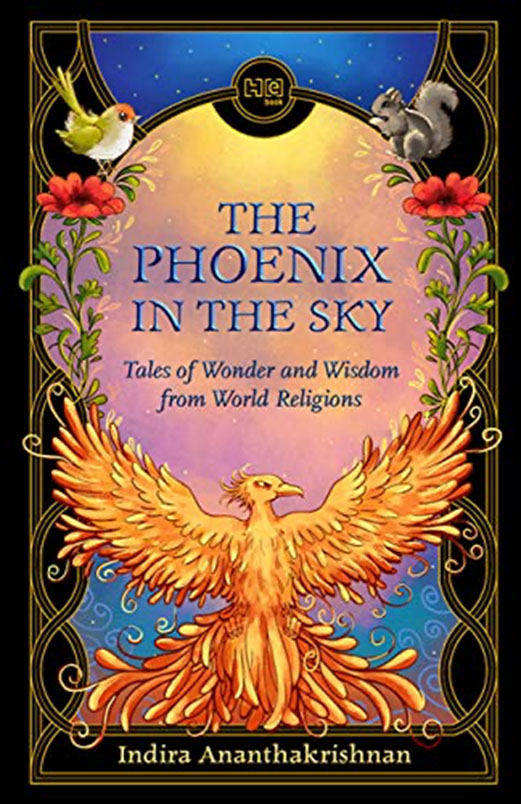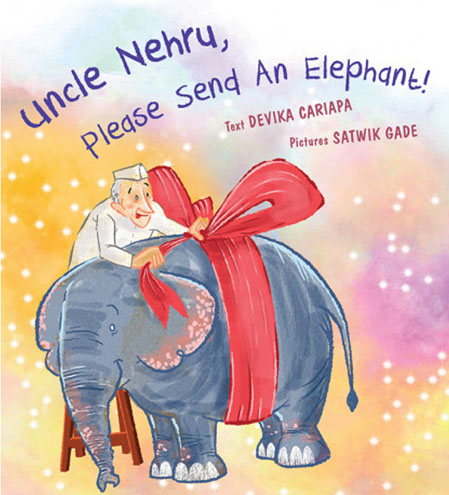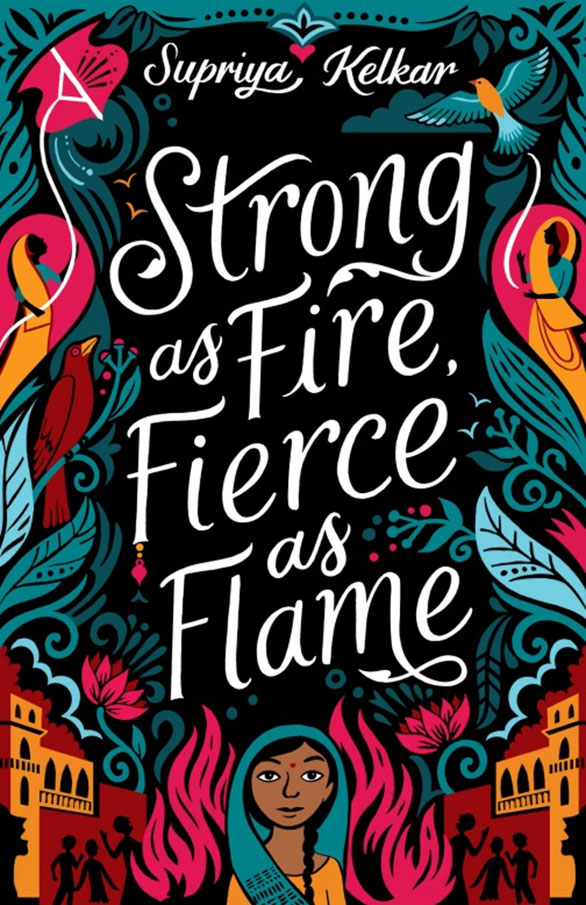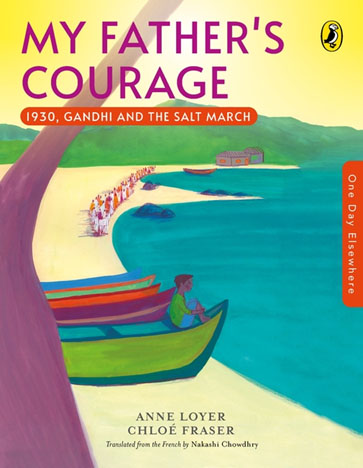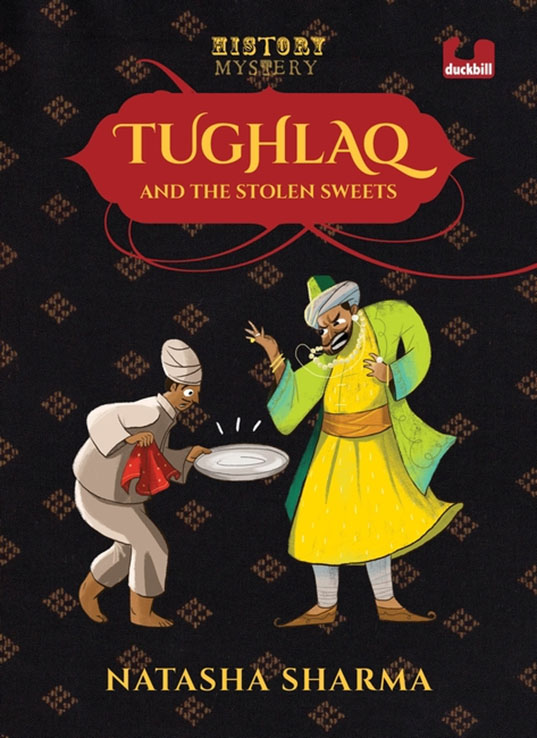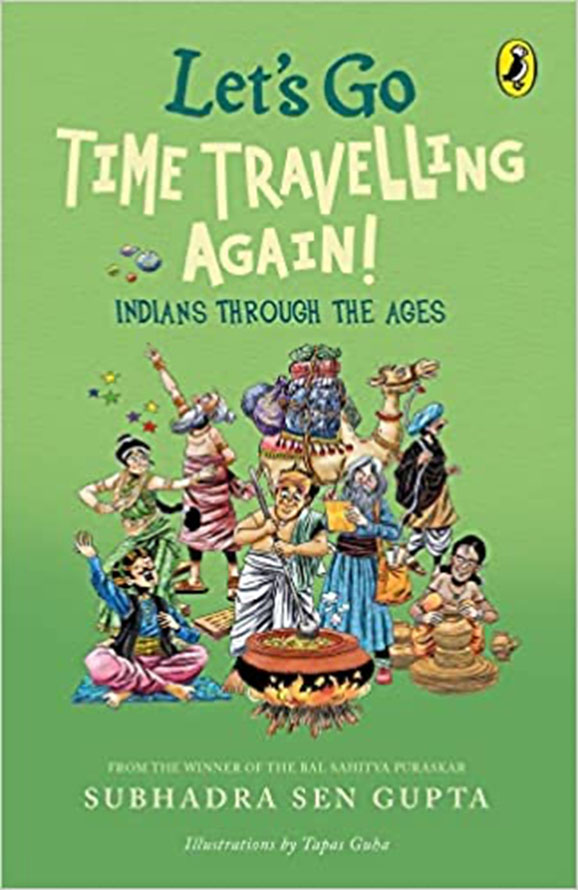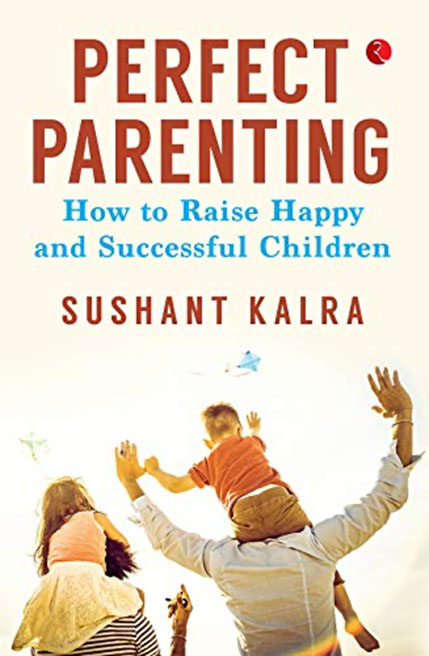Bagh Bhi Padhte Hain written by Chandan Yadav and illustrated by Amrita is a short story collection. Most of the characters are animals which might remind you of folktales but on reading you realize that these take on the content with a touch of humour and eventually arrive at practical, kind and humane resolutions.
Archives
November 2021 . VOLUME 45, NUMBER 112020
The Grumpy Man makes for a delightful reading experience. Illustrated by Suvidha Mistry, the scenes are set so beautifully that children are sure to have a blast reading this short story by Cheryl Rao.As the title suggests, the story is about a grumpy man and the kids in the neighbourhood who are wary of him. Their curiosity is aroused and they want to know about this grumpy man who is not moved even by their good deeds. Their childhood pranks are always met with disapproval. On holidays, they would leave sweets for him at his doorstep but even that gesture does not endear him to them…
Yamini and the 7:00 pm Ghosts is a story by CG Salamander that revolves around 12-year-old Yamini and her friends discovering the mystery of ghosts in their neighbourhood. The story begins with Yamini hearing the rumours about ghosts in her neighbourhood that come around 7 in the evening. Everyone in the neighbourhood is scared of these ghosts, including Yamini’s friends. But Yamini doesn’t believe in the rumours. Therefore, she tries to solve the mystery…
Once cheerful and sunny, the village of Himmatnagar has changed in the past month since the mysterious deaths of three of its nativesRam Nayak, Chintamani, and Reddy. The natives of the village seem to have stopped smiling and are always tense; the police seem to have no leads to the cause of the deaths. Welcome to the village of ‘Himmatnagar: Land of the Brave’, formerly known as ‘Phattupur: Village of Cowards’.Adithi Rao in The Bhootbusters of Himmatnagar brings the village canvas alive—the trees, the ponds, the local school, the expansive farmlands, and the village cemetery. Illustrated by Sayan Mukherjee…
2021
The Sackclothman has been developed for Different Tales: Stories from Marginal Cultures and Regional Languages, an initiative of the Anveshi Research Centre for Women’s Studies, Hyderabad. To be honest, I judged this book by its cover–in fact, I was totally intrigued by it. The illustrations by Rakhi Peswani are commendable. The story evokes the familiar imagery from Rabindranath Tagore’s famous story ‘Kabuliwala’. There is a young girl, an ‘outsider’, a social outcast; and the familiar attachment between the two of them. It even has the same gut-wrenching scene of the outsider being taken away from society after establishing a tender bond with the little girl…
2020
The Waiting may seem like a simple book, but it is pretty complex with multiple stories surrounding the main character, Anit, and his friends–Bimal, Chandan, and Deeksha, also known as the ABCD gang in the book.Dipavali Sen talks about bullying/ragging and connects it with mythology, magic, historical research, scientific experiment, contemporary attitudes, and mystical practices.The Waiting is an adventure book. It starts with Anit’s story of shifting to a new house, a new school, and how he is bullied there as a new boy. Even though he is irritated and frustrated, he does not tell his parents about the ordeals of the ragging he faced. Being an the only child, he understands all the hardships his parents had gone through to buy a house for themselves…
2020
Hawa Mithai by the renowned Hindi poet is a collection of essays on the elements, water, light, air, as also on sound, the earth, sky, fire, the seasons. E.g., water is derived from clouds, rains and rivers and light are derived from the Sun, Moon and the stars. Humans, birds, animals and even plants and trees, all depend on the elements. We derive abundance of pleasure from them but when we make them angry, they bring misery to us by causing floods, earthquakes, thunderstorms, etc.The author has described these elements in colourful details. There are three essays on potatoes, cycle and green chillies to add spice to the volume. The illustrations are attractive, Kulkarni has done a very good job…
2020
The ‘children’s books’ I grew up with were essentially preachy adult stuff parading as stories for children. It is a delight, therefore, to see these six books which try and see the world through the eyes of a child.Sher ki Neend (The Lion’s Sleep) written and illustrated by Manica K Musil presents a lion who is not a fierce hunter out to kill and frighten children. Rather, it is a lion that desperately needs a snooze but cannot sleep because birds and monkeys and insects don’t let him. Finally a bird leads him up a hill and he falls asleep: a lovely metaphor for a child’s desire to guide grownups. While the tale alone is sure to engage any six-seven year old, the fabulous illustrations, created with a variety of fabrics, threads, rope and wool, would compel even older people to turn its pages…
Chaman Lal Ke Pyjame is an interesting collection of six stories written by Anil Singh for children aged 8 and above. All the stories are set in Umariya, a district in Madhya Pradesh. The language is colloquial bringing back memories of a Madhya Pradesh I grew up in. The Hindi spoken in small towns of many Hindi-speaking States is something one does not generally hear in Metropolitan cities. It is very quaint and only people living in those parts may be familiar with some of the words that I came across in these stories…
Babies In My Heart is a simply-written story about the concept of family, and the types of families found in today’s world. The story begins by introducing the reader to a standard nuclear family with biological father, mother and their biological children—the archetypical Hum do hamare do; and then goes on to introduce families with twins, triplets and quadruplets. Then come same-sex families with two mothers or two fathers. Here, the concept of adoption is brought up by differentiating between tummy mummy and heart family. Then the concept of a single parent (actually a single woman) family is introduced…
2021
Gulab, the daughter of a manual scavenger—is mocked at by her class mates as ‘stinky Gulab’, not because she is filthy but because of her father’s profession which involves cleansing of clogged gutters.So, on science day in school Gulab takes the first bold step of showcasing a machine to clean up the drains without involving any human. She names it Gulab which will remove the dirt and spread fragrance.The story revolves around the inherent class divide existing in our society. Both Gulab and the bullies are the victims of this societal discrepancy, one as perpetrator and the other as victim…
2020
The story revolves around two princesses created by the fairy queen Sheera to deal with her boredom. One of the princesses is sent to the kingdom of darkness and is to be protected from the sun while the other is sent to the prosperous kingdom of the light and is to be protected from the night. Sheera keeps adding up complexities to their lives as the plot progresses until they both finally meet each other and help each other’s kingdoms.The story has three female characters as protagonists and all three of them are appreciated for their beauty first and other characteristics later. The adjectives used for the females are only focusing upon their physical attributes which follows the standard beauty norms…
Fantasy is a tricky genre. It plays right at the heart of why many of us read: to escape, to find refuge. After the success of Harry Potter, publishers around the world flooded readers with YA fantasies, so much so that the genre became saturated with numerous worlds, each with their elaborate rules and patchwork characters. And while Tanaz Bhathena’s duology, Wrath of Ambar is based on one of the oldest tropes in storytelling, a hero, her destiny and the quest she embarks upon, the result is a refreshingly absurd world which attempts to hold up a mirror to the one we inhabit and create every day…
There used to be a time, long ago in most of our childhoods possibly, when we would have real, vivid and intense dreams, dreams within dreams, where we would experience physically acts of falling from a height, slipping, running and even as we awoke, our hearts would continue to race. Sangu Mandanna’s ninth adventure fantasy novel is a quick paced, vividly descriptive work of art and imagination.Kiki Kallira is the protagonist, recounting her life in the first person. She loves sketching and draws up characters from the Indian folklore of Mysore. Even as these characters come alive, threaten to destroy the real world, there is a parallel narrative of great courage and bravery displayed by Kiki—alluding to an aspect of herself that remains mostly hidden…
In all good Hindi movies, after a lot of trials and tribulations, the hero would come in and save the day. After all the trials and tribulations COVID brought upon us, it looks like the hero is ancient Indian traditions, which would sweep in and save the day. From doing namaste instead of shaking hands and exchanging viruses, to realizing that humble kaarhas worked better than unnecessary remdesivir. So maybe even for fighting the current ongoing epidemic of non-communicable diseases, worsened by COVID, the hero will be the same ancient traditions: food practices and exercise, based on sound scientific principles, which will sweep in and save all of us. Ayurveda recommends that meals should have something of all the six flavours: sweet, sour, salt, spicy, bitter and astringent…
My first introduction to the nonsense verse was a book gifted to me on my ninth birthday—Edward Lear’s Book of Nonsense. Growing up around that timeline on a diet of Enid Blyton’s works, Nancy Drew, Hardy Boys and Norton Juster’s works—this book deviated from the usual parameters that writers normally take into account when writing for children or young adults. The artwork in this work were exaggerated faces and as shocking/surprising as the images were; they were absolutely delightful. Later on, I searched for works in this genre in the Indian context that had for their audience children and adults as well and came across an anthology of translated works published in 2007…
2021
A Pinch of Magic by Asha Nehemiah is a story about a girl named Veena and her aunty Malu. Aunt Malu makes herbal medicines. She is known for her herbal medicines that she learned from her Guru. One of the tools that Aunt Malu uses to make her medicines breaks and the story revolves around Veena and Aunt Malu looking for that pinching spoon that is required for making medicines.The story throws light on some very important issues and breaks stereotypes while sticking to the narrative. The role of women is a major part of the story. Aunt Malu and Veena go to Harrabharrapazham in order to look for the Guru. Initially, they are disappointed because they are not able to find the Guru. But later in the story we see that they find the Guru and she turns out to be a woman, when they were expecting a man…
There is a nightmare haunting each and every one of us—young and old—the fear of contracting the dreaded Coronavirus. Life has turned upside down ever since the pandemic made its presence felt, and the struggle to embrace ‘the new normal’ has taken a terrible toll on us. The risk of contracting the disease is grave indeed, but equally alarming are the mental health issues that are spreading as rapidly as the virus itself. Children have been severely impacted by this situation. With their regular routine completely disrupted, and talk of the dreaded virus blasting them from all corners, they feel bewildered and insecure, many are quite traumatized. Their need for assurance and understanding from the adults in their lives has grown immensely during the pandemic…
Susruta Patil is just another kid—but not quite so. He loves sketching, but is terrible at football. He is a great friend, but suffers at the hands of bullies. He loves poetry, but cannot punctuate. His name does not make it any easier, especially when he wets his bed!SP, as his friend Lobo calls him, sinks into the deep hole of depression. He feels the world is against him, and that he cannot catch a break. However, Lobo, and Kuhu, the best footballer around, help him see better. He opens up and shares his world with them, and suddenly the hole isn’t so deep and dark after all…
2021
‘After all, a story survives only a few minutes…Who doesn’t know that most newspapers are waste in the afternoon?’ This is Ramayan Prasad, a journalist, working for one of the leading national newspapers in India. For past many years, he has swiftly and skillfully worked on some really troublesome reports; he follows the cases, files his copies and moves on. But something has changed since he started working on a case of a gang rape in the national capital…
If the children of India dream, let them dream of India.’Anant PaiOn Anant Pai’s 90th birth anniversary, it is fitting for Rajessh M Iyer to have penned a homage to the life and work of the father of Indian comics in his biography Uncle Pai: The Man Behind the Iconic Amar Chitra Katha. From the Author’s Note to the Epilogue, the biography pays glowing tributes to Anant Pai, his vision and dream, in such a way that some readers may even term it a hagiography.In terms of including criticism of Pai’s work, there do exist fleeting indications of ‘baseless criticism’ (p. 316), a passing reference to Pai’s anger and a brief section entitled ‘Objections’ describing Valmiki Sabha’s objection to Valmiki being portrayed as a thief, leading to Pai’s effigies being burnt…
2020
This is the first time I have encountered a movie adapted to a book. It is based on an adivasi boy called Oonga and his story. The author has created a brilliant atmosphere around the whole plot. The book is an eyeopener for me. The words come alive right from the first few lines. The characters in the story are also so unique, they are brought to life in the story. The story woven is realistically displayed with all the flaws in life, in the system, in different people…
A well-written book with extensive vocabulary, Teji Grover’s Mann Mein Khushi Paida Karne Wale Rang is full of memories, stories, haikus and appealing art. Divided into fourteen chapters, the author reminisces about some of her childhood memories and describes them in detail. Each of the fourteen chapters tells a different story. Readers are able to vividly imagine the incidents, some of which include the rescue of a cat on Deepavali, the life story of the author’s friend Alan or the recollection of her visits to countries. She also writes about the art she made in her childhood, the use of natural colours and their importance…
2021
Little America is the story of Sharif Barkati, a boy from the slums of Karachi who aspires for more—he wants love, he wants to be free. He achieves this by creating his own little haven of ‘freedom’, first in his school, then in his father’s car and then in a few ramshackle buildings with his friend in the city. He himself does not indulge in any of the freedoms he offers others—a space to drink, smoke, dress, speak and love as they want to; his exhilaration comes from their joy at expressing themselves unrestrained by society outside. And the space he creates is for everybody…
2021
Everyone is a work in progress.’Go back and read that sentence, again and again. Andaleeb Wajid focuses on teaching us how to love ourselves while dealing with many problems in and around us. Although Mirror, Mirror is a young adult book, anyone can read it. It may seem like a young romance novel, but it is so much more than that. It deals with issues like fat-shaming, adult pregnancy, societal expectations, and first loves.Most importantly, it raises the issue that most teenagers face, ‘choosing the subjects/stream for their future’ and ‘deciding what they want to do in life…
Bringing Back Grandpa by Madhuri Kamat, a sequel to Flying with Grandpa is a realistic portrayal of the life of a single child in an urban, middle class Indian family of today. The child’s character is coloured with loneliness and control. This review begins with a brief summary of the story, which is followed by some observational comments. Finally, the reviewer poses a few questions on the current state of childhood in India and what role children’s literature can play to address children’s needs.The story appears as a page from the life of a single, privileged male child, Xerxes. He is quite close to his grandpa, who is his only friend and also his saviour. All of a sudden his grandpa falls ill. Before Xerxes could make sense of the situation at home, he finds himself being bullied by his classmates…
In March 2020, the world was told to shut themselves in. The much-condemned mobile phone became the center of our lives. Children who till February 2020 were told by WHO that screen time was evil and they should play vigorously outdoors at least 60 minutes every day, were forced to stare at screens for study, and stopped from playing outside. In short, everything turned upside down, or rather, to make a bad pun, outside in. They do say, though, that every cloud has a silver lining. Well, this little book is part of the silver lining. I have carefully mentioned the cover pages, because the front cover sets the tone, while the inside front cover and the back cover also have little gems tucked into them…
The book under review comprises twelve chapters, with eye catching illustrations, and easy to relate style of prose, that act as nothing less than a Bible for young adolescent girls. It beautifully explains the transition from hoops of puberty to fabulous adulthood. Young girls often tend to become self-conscious owing to the changes that occur during puberty. A proper guide, the right information and knowledge is what is needed to battle the dilemmas of adolescence like: their first period, picking up their first bra, encountering pubic hair, relationships, boys, developing pimples, gaining weight, periods hacks, menstrual hygiene, etc. This book is a good pick for that…
2021
Sami is a young adult; a ‘girl’ who felt more at ease in carrying herself in a way that’s conventionally attributed to ‘boys’ only. This was often met with a wide range of inconsiderate, harassing (and vulgar) remarks and humiliating questions… Are you a boy or a girl? Her parents were thoughtful and sensitive enough, but that did not mean an escape from the occasional, You know you’re not a boy, right? Why don’t you make an effort to look more like the other girls?Sami soon discovers that she is gay and seems to be accepting and willing to explore her sexuality. As she is about to start exploring this newfound realization, a major shift comes in; she has to move to Chandsarai with her mother, a small village in the hills. Being away from her father, Nisha (her best friend) and the place she felt so connected to wasn’t easy…
Childhood, that precious time of intense loves and hates and hopes and disappointments, has been marvellously captured by Divya Anand in her story for children I Hate my Curly Hair, a story, beautifully illustrated by Rujuta Thakurdesai, that is reminiscent of the illustrated stories by that wonderful writer for children, Dr Seuss.The primary objective of any literature be it for children or adults is to entertain and give pleasure. I Hate my Curly Hair does this amply by using a rhyme pattern that would delight any young reader by the way it trips and slips off one’s tongue with its tizzy and frizzy and giggles and squiggles…
ll Time Favourites (For Children) celebrates Ruskin Bond’s writing with stories that are always loved equally by children and adults and can now be enjoyed in a single collectible volume consisting of 25 enjoyable stories. Curated by India’s most loved children’s writer, this collection brings together some of the most evocative episodes from the author’s life. Heart-warming, funny and spirited, this is a must have on every bookshelf!‘Goldfish Don’t Bark’ is a delightful story of Koki and the goldfish, which is kept in a glass jar and is constantly admired by the little girl who is visiting her grandmother, living on the other side of the hill. She is happy to notice that the goldfish do not make noises like dogs, donkeys or the birds…
Smash It, Butterfingers! by Khyrunnisa A is the latest addition to the Butterfingers series of books meant for the reading pleasure of folks in their early teens. Sports is the main theme of all the books set in the backdrop of the fictitious Green Park School. In the book under review, students of the school have an adventure that involves badminton, and a cat named Ozymandias. The hero of the tale, Amar, is affectionately called Butterfingers, because well, he is one. He has a talent for dropping things, bumping and crashing into objects and people, injuring himself and his friends and family, and generally emerging from such misadventures unscathed and victorious…
A collection of 50 stories! Stories that have been read and known worldwide. They take readers on a journey into the time that’s part of history. Through the book, we meet characters from history and mythology, encounter stories from various older generations and also get a sense of how the then human relationships and society would have been like, across different parts of the world. This collection consists of renowned stories by some eminent litterateurs such as Leo Tolstoy, William Shakespeare, Oscar Wilde, Sir Arthur Conan Doyle, Anton Chekhov, Rabindranath Tagore, Premchand and Sukumar Ray…
Bobo and the Worms is by Abokali Jimomi of Nagaland. Any book for early readers must be accompanied by illustrations that fire imagination. Canato Jimo’s illustrations perfectly accompany this simple but prettily told story. Which child does not like visiting her grandma? Grandparents are special people in any child’s life. There is a warmth to them that cannot be replicated. Grandparents are not difficult or demanding like parents. Neither are they rough and unruly like one’s own playmates. They can get down on their knees and play with you or open their knees wide and rock you when you need comforting…
2019
This book is an effort in reading promotion among children that Pratham Books stands for. It is a ‘Learning to Read’ book or ‘Level 2’ book. The previous (Level 1) is ‘Beginning to Read/Read Aloud’. The next two levels (Levels 3 and 4) are ‘Reading Independently’ and ‘Reading Proficiently’.As the inside back cover tells us, author Anurupa Roy is a puppeteer, puppet theatre director and puppet designer. She is the founder-managing trustee of the Katkatha Puppet Arts Trust, Delhi. She has directed many puppet performances and undertaken international tours with her puppet group…
Ammu and the Sparrows is a sensitively written story dealing with the curiosity and questions and long wait of a child—for his parents. The book has been categorized in the green coloured Level 3 book—those books that are meant for children who are ready to read on their own.Ammu spends his days on his Ammamma’s terrace, looking out and waiting. Is he waiting for Amma and Accha sparrows to come or is he waiting for someone else? Is this wait going to get over any time soon? The open-ended story leaves the reader with many questions like these. And the best part is that the story does not give us ready-made answers, but allows the readers to imagine and construct the answers themselves…
Here is a bilingual book written by 16 children coming from different parts of India and different walks of life. They speak their heart out—they tell us in clear, bold, straightforward words what they wish for. Their dreams, wishes, aspirations, hopes—is what is the core of this book. And adults, elders, parents and teachers—may as well listen. As India inches towards the 75th anniversary of its hard-earned freedom in 2022—this illustrated book is a reminder to us adults as to what we have not been able to give to our children in so many years, and pay attention to what they yearn for…
2020
A picture book with minimal text from Eklavya.This album-size book with large bold illustrations is perfect as a child’s FIRST book. Here, the element of story is irrelevant, almost redundant.It is all about familiar colourful images that inhabit a child’s universe—water, fish, frog, buffalo and so forth. It does not have to tell much beyond mundane things like a buffalo’s horns, its tail, and of course the delicious joys of hush-hush words like su-su and poo-poo, that are so much a part of the early years…
A little story book from the Muskaan Series of Eklavya. It tells a simple story that would appeal to a small child, who does not yet read by herself, but enjoys listening to a story.However, the text of this book does not lend itself to an interesting read-aloud experience. The sweet little story is actually written jointly by four Agariya kids, Sonam, Ritik, Vikram and Ajay, with some assistance from their school teacher. Although originally written in Hindi, the syntax and choice of words sound somewhat stilted, akin to a literal Hindi translation of an original English text…
2021
Truly, an offering for a world increasingly dominated by the digital media. A short little story for kids as young as 3 years to as old. For, let us face it, whether we like it or not a mobile phone has become a favourite ‘toy’ for the young and old alike.To add to this bane of device obsession, we now have online classrooms! The die is cast. What began as a guilty diversion has now become a necessary evil.Richa Jha in her delightful book Ast-Vyast Mast addresses this issue without making it preachy for the young reader. In fact, she turns the tables, depicting a scenario where the internet is down and it is the child that pulls her parents away from their respective devices to enjoy a fun-filled family time outdoors. After an exhilarating time in the park the family returns home where we have a twist in the tail. Our online student is frustrated at not being able to access her school results as internet is still down. A reality check!…
Great nonfiction in Indian children’s literature is hard to come by, especially picture books for young children. I was pleasantly surprised to get a set of non-fiction books translated into Hindi by Eklavya. These have been translated from English by the eclectic Sushil Shukl. The first one, Ande Mein Kucch Kala Hai is about the life cycle of frogs. Nona aur Seb ka Ped is about the journey of an apple tree from a seed to a full grown tree. Both the books are written by Kanchan Sharma and illustrated by Radhika Tipnis. The rhythmic text brings in a fresh flavour to the stories and are unlike any non-fiction book I have read in Hindi…
These books are a fascinating example of the kind of good that a regional publisher publishing in a regional language can do for children to develop critical thinking skills, a scientific outlook, pique their curiosity about natural phenomena or sensitize them to the gradient of social difference and inequality that is often actively and conveniently ignored in school syllabi or made invisible in social discourse. Stories for children have been used to instruct and entertain, but these books are special not only because they take their inspiration from the world around them where the context, art and language are familiar and relatable, but also because their printing and pricing makes them attractive and accessible…
2021
A simple story, whose title itself excites curiosity, and colourful eye-catching illustrations in an unusually large-sized picture-book—what more does a beginning reader need to get attracted?The very size of the book catches attention. The two little girls aged five and six years, whom I teach as they are homebound due to the Corona epidemic, fight to grab the book. It is spread out on the table and they both bend over it, the younger concentrating on the pictures while the elder tries to read the text. Big words, difficult for the under-privileged kid to read, and I have to help her at first. But as the words get repeated, slowly she is able to recognize them…
The three stories in this book effectively present the lives of children from marginal and underprivileged families that struggle to provide for their school-going children. The stories reflect everyday problems like lack of money to buy text-books, keeping up with classmates who can well afford every luxury, efforts to walk all the way to reach schools located in neighbouring villages, and the discrimination faced on religion and caste grounds.The first story relates the story of a child trying to find a good bargain while buying second-hand textbooks for class 8…
2020
This book is part of a collection of books brought out by Anveshi, in its attempt to present stories from regional languages and other cultures before readers. The targeted age is not mentioned but the long, rambling tale will be better appreciated by older children. Though published in picture book form, the language, as well as the small print size confirm the assumption that older kids would enjoy the book better.Old Guravva weaves fantasy stories around the sun, the moon, and the stars. Her stories are enjoyed by the little group of children who listen to her with wide-eyed interest…
The awareness towards the growth of child-centric literature brought into focus the magnitude of picture-books as a tool in the learning process for children. As soon as the child steps into the social realm, picture books offer easy-to-learn medium for the child. The familiarity with words, language and speech through reading the pictures and text for communication are all packed in a small bundle in a picture book. Picture books are profusely illustrated simple stories and information to aid the learning process and enhance social skills…
Editorial
Hope: Stories for a Healthy Mind by Pragati Sureka is an anthology of short stories of three children dealing with different psychological challenges. These stories are named after the young protagonists; Ryan, Kabir and Shoma. The first story is of a young boy named Ryan. The story unfolds with the emotional turmoil faced by him due to the quarrel between his parents. He is unable to concentrate on his studies and withdraws himself from participating in school activities. His class teacher notices this change in his behaviour and decides to speak to him…
I introduced my daughter to topics such as body safety, consent, and body image, around the age of three. I think it is a good age to start talking about the body. I referred to several YouTube videos and books, to choose simple enough words and images, appropriate for a preschooler. While there is no dearth of books covering this sensitive subject, there is a pressing need and growing awareness among parents and teachers about the introduction of these topics to young children…
Being a mother to two young kids, one being a bit young for stories, I am always on the lookout for good books that I could read along with them. My five-year-old daughter is always fascinated by topics like space, planets, and astronauts. Her young, creative mind goes for a spin every time she is made aware of the possibilities. So, when I received the options for books to review, I was quick to select A Journey to Mars: Mangalyaan by Nikhil Gulati. I am extremely glad that I made that choice. The book succinctly describes India’s Mars mission to young readers…
Somak Ghoshal’s 10 Indian Heroes is an important book. The Constitution of India is easily invoked as part of conversations, but do we live it? ‘The idea of dignity is at the core of our identity as Indians. In 1949, when the Constitution was adopted under the leadership of Babasaheb Ambedkar, the word was introduced into the Preamble’, writes Somak in his introduction. ‘But what does dignity really mean? How do you experience it in your daily life? And, more importantly, what does it look like in practice, as opposed to simply being an idea in our minds?’ he poses…
Noon Chai and a Story is a slim little book, beautifully illustrated which gently draws the young reader’s attention to what books mean to those who are deprived of them. But while the story is about books it is also about the world in which the young protagonist lives with her parents, her sister and her beloved grandmother, Deidi. Looking at life through the eyes of a little girl living in the remote area of Gurez, the book gives an authentic representation of life in this beautiful but little known corner of India…
Archimedes and the Slice of Bread—the title piques your interest and you dive right in. The book is about a father who is trying hard to invent something, and his daughter Eureka and her cat Archimedes. Eureka feels sorry for Papa, who has never invented anything in his life, except for trying to invent a square soap bubble that burst before he was successful. The only thing he has invented is a strange name for her. Archimedes loved to lick butter off Eureka’s slice of bread. Once when Archimedes tries to lick the caviar off Papa’s slice of bread, he lifts him and throws him away from the table…
Depression, there I said it too….! Was that such a big deal…? Wasn’t that difficult, was it? No! It’s just a word but when you say it out loud, it seems like half the battle is won; when you acknowledge it, its existence, you know, it’s no longer an unbeatable monster that you thought it was. It’s only a monster if it is hidden, if it is out of sight. And perhaps if you push further and make an honest attempt to understand it, preferably without mocking it, then you realize that this so called ‘monster’ is just a burden many of the unfortunates carry, a monster that can be destroyed.
How do you describe the importance of fishing so as to not overfishing the rivers and seas? In communities living in wary coexistence with dangerous and deadly animals, whose livelihoods depend on harvesting forest produce, how do you convey the importance of ecological preservation? How do you impress upon the need for sustainable logging practices and forest management, to prevent the denudation of forests on the mountains from where rivers flow? In short, how do you convey the actionable ideas of science such that they dictate the behaviours of the community and the individual?…
Generation Y, commonly referred to as millennials, are those who were born between the early 80s and the early 2000s. This generation is typically highly aspirational, and tends to be self-absorbed. Often when the realization dawns, early in life, that reality is nowhere near their expectation, it leaves them disillusioned. Partly the fault lies, according to the author, with the parents of this generation, as they tend to raise their kids making them believe that they are special, by constantly reiterating that the world has unlimited opportunities for them…
Simple and neat. The book is more like a guided journal with questionnaires, templates and exercises to think through interwoven with the theory. The entire content is spread across five sections. Each section covers basic concepts of business and economics in a succinct manner that can be grasped by not only pre-university students but also high school students having no orientation to the subject.The first four sections are all about setting up a business—idea to execution. These sections include a good mix of brief real-life startup stories like Wildcraft, BookMyShow, etc., though juicy details are missed here. Running over a little on what goes wrong for start-ups and why without affecting the experience of positivity of the book could have been beneficial…
An orchid that grows underground, wasps that come to attack pests on a plant in response to a chemical signal sent by the plant, glue from the juice of flowers, a poisonous seed used to weigh precious metals…there’s plenty of fascinating stuff happening in the plant world. Amreen Toor has a captivating lineup of facts in 501 Facts Factory. The book, all 170 pages of it, is packed with interesting information…
They say never judge a book by its cover. Wise words but the title on the cover of a book definitely gives the reader a good reason to give it a second look…or not! And this title grabs attention immediately! The strength of this book is the choice of the topic. It is extremely relevant for people spanning a wide age group. It speaks of microbes coexisting with us, a fact that is certainly not new but it describes the width and depth of our interaction with microbes which is not so well known to most people, barring the experts…
Maps are very important tools of education. What is a map?The old idea of maps focuses on its utility, to locate places and determine directions. Political history has widened this core utility to include in it a powerful socializing devise, to create territorial nation states in the young minds. Education submits to the mysterious power of the boundaries that maps display. Borders tend to make the earth less important than the inhabitants of each society and nation. Nature’s crisis and the state of tension between human relations, and nature and human relation with other humans become unreceptive to education, including the best kind of education…
Through the two Vikram-Aditya stories, Deepak Dalal showed me a glimpse of the beauty of Snow Leopards of the Himalayas and the coral reefs near south Indian Islands. Vikram and Aditya are two adolescent friends, who find themselves in adventures dealing with men involved in illegal work during their trips away from their school in the Nilgiris. The travel adventure does more than just telling suspenseful tales. Though the books are committed to a nail-biting plot to hand over the criminal mastermind and bring them to justice, in doing so the author makes use of descriptions of the locations that takes the reader through the geography of the places…
The Antarctic Mission is the 13th book in the series Aditi Adventures by the well known feminist, fabulist and writer Suniti Namjoshi. Aditi is a young girl (inspired by Namjoshi’s niece—her namesake) who sets out on the most amazing adventures across the world along with her three companions: a monkey, an ant, an elephant named Beautiful and sundry dragons. Originally published as a twelve book series dealing with diverse themes, the stories blend adventure and fantasy, the tech savvy world of today and the magical…
We live in a world that is messy and complicated. Technology has escalated it. Are children untouched by it? Hardly. Their sense of good and bad, right and wrong are no longer simple. Ask a child if good begets good, and in all probability you will hear a ‘no’! How Earth Got its Beauty by Sudha Murty for children is a story that is from another time—innocent and uncomplicated…
Climatic change has become a global concern over the last few decades. It refers to the change in the environmental conditions of the earth. This happens due to many internal and external factors. Isn’t it interesting that knowingly or unknowingly we observe various things such as trees, vehicles, garbage and so much more? What are all these things? They’re nothing but a part of our environment. Bijal Vachharajani discusses climate through a series of letters from the animal kingdom and has interestingly and skilfully entwined two valuable learnings…
Just like the tales and legends of Iliad give a magical patina to the mystique of Greek of yore, this slim book And That is Why with enchanting myths and legends from Manipur, recreates a world that lends a strange yet acceptable dimension to our humdrum lives.Well-known author and cultural maestro, L Somi Roy, may have retold the tales for a young audience, but such are the re-tellings that an adult is forgiven if charmed by them. As a cultural, literary and sport celebrity who is native to Manipur, Mr Roy has picked a collection of legends that tickles one’s imagination and, at least to this writer, encourages lateral thinking…
Anastasia Damani’s illustrated books are a pleasure to read. The world is becoming a smaller place every day. You can go off to London or to Europe for a holiday and you can also visit lesser known exotic places. But we have so many novel and beautiful things and people all around us and it is an amazing experience to learn about some of them. India was ruled by the British for a long time and then in 1947 they left the country. But some of them, especially those belonging to mixed families, that is both Indian and British, loved the vibrant and warm culture of our country and so they stayed on…
All children are born imaginative, some perhaps more than others. And imagination fosters creativity. Unfortunately, their curiosity to discover the world around often gets jaded over the years. What experience ignites a child’s imagination? What helps the child pursue the ideas formed during the growing years? As a child, Einstein was fascinated by a magnetic compass gifted by his father to play with, wondering why its needle always pointed to the north! Later, in his teens, he would marvel how it would be like if he travelled so fast as to catch up with a beam of light!..
This is the story of a determined, stubborn and spirited girl who has become famous as Teejan Bai. She has been heaped with honours, but her journey from the humble Bhil village of Ganiyari (Chattisgarh) to the world stage was a struggle. Teejan’s birth was not welcome in her impoverished family, and her enthusiasm for playing kabaddi and climbing trees met the disapproval of her disciplinarian mother. She was mesmerized by her grandfather Brijlal’s performance of Pandvani—narration of tales from Mahabharata and wanted to sing also…
Ribhu’s Adventure on Earth is a fun story where a fun-loving air-spirit Ribhu, a child of the Gandharvas of Indian mythology and student of Gandharva Vasusen gets cursed by sage Durvasa for disturbing his meditation. With his dholak as the only companion he is cursed to go down to the earth as a demon rakshasa in Dandaka.The story revolves around Ribhu’s adventures in his new life with his dholak as a friendly reminder of the past, where he meets demons like Tadaka rakshasi, Mareecha (Tadaka’s son) and observes how Rama frees them from their curses. Ribhu then moves away to Mithila where he meets Ahalya (the wife of Rishi Gautama) turned into a rock and waiting for the young Prince Rama to come there and touch her with his foot to free her from the curse…
The book is mainly based on the story of Ramayana. But it differs from most of the books narrating the story of Ramayana in the sense that other books have Rama, Lakshmana and others as the main characters, but this book gives you a new perspective on the journey of Rama. It depicts the contribution of the monkeys in Rama’s Ayana i.e., Rama’s journey. Whether it was the search for Sita or the construction of a bridge over the sea to reach Lanka, or defeating the greats of Ravana’s army, or bringing the Sanjeevani herb to save Lakshmana, all this would not have been possible without the cooperation of the monkeys…
The enchantment of the epics, Ramayana and Mahabharata, is soul stirring and timeless, capable of reviving the thrill of the tale with every fresh presentation of the drama down to the current times and newer audiences. So many creative attempts have been made, using a variety of formats, styles and texts to analyse the story and the characters through the years in novel interpretations but the main source still remains a fountain of joy for authors to re-create the original tale. Salutations to Vyasa for painting such a rich canvas of the Mahabharata from where writers can never tire of highlighting every single square inch of the grand picture, time and again…
Hindu Mythology is often seen as a complicated, contradictory and inaccessible compendium of stories that we all have heard bits and pieces of, but never really knew sequentially or entirely. Despite the unique stories and characters involved in Hinduism, the fact that there are multiple sources and versions of the same myth makes it difficult to involve children in learning these extraordinary tales. Mythquest Omnibus is a beautiful series of four books, which resolves this dilemma in a simple way…
In The Phoenix in the Sky: Tales of Wonder and Wisdom from World Religions, the author Indira Ananthakrishnan tells stories of wandering monks, wise kings, foolish gods, ordinary people with extraordinary deeds, heart-warming miracles, and daring escapes. You get to read the story of Raikv, a mystical cart driver. It is from the Chandogya Upanishad. You will get to know the three questions Prophet Mohammed asked his disciples. Most of his older disciples did not know the answers but a young boy gave all the right answers!…
2020
Both the stories in this volume have been translated from the Malayalam, and bring alive people from the past.The first story, ‘Badshah, Mera Dost’ written by Shefali Jha is an innocent tale narrated by an eleven year old boy. The young protagonist Adil’s hatred for history turns into love in a fascinating turn of events. Adil, a bright child who loves sketching is very attached to his father. Despite having a great history teacher, he finds no interest in the subject and gets demotivated easily.
What do Indira, Ambika, Murugan, Asha, Mohini, Ravi, Shashi and Ambika the Second have in common? They were all India’s ambassadors, but you will not find their names in the civil list. And who would have thought that ambassadors, diplomacy and international relations could be topics for a children’s book? Clearly Devika Cariapa did! She presents the most appealing aspects of Nehru’s ‘Elephant Diplomacy’, in a well written, easy-to-read narrative for children. Jumbos sent as gifts to children across the world who wrote asking for one…
This story is set in 1857 in British India. It is centred around 13-year old Meera, who, at the age of 4, was married off to a 4-year old boy named Krishna. Sadly for Meera, her teenage husband is killed during a trip to Delhi when he is caught in the middle of gunfire during the Mutiny, also known as India’s First War of Independence. This rebellion was a major turning point for British rule in India. Meera’s life is entangled in these historical events as she is caught up in cultural expectations that she does not agree with. Her father expects her to die on her young husband’s funeral pyre, but Meera chooses her own path by running away…
The One Day Elsewhere series by Puffin consists of a set of four beautifully illustrated books, translated from the French by Nakashi Chowdhry, which tell the story of individuals and events in history that changed our world. Picking up incidents from world history which have resonated across time and have significantly impacted politics, environment, science and humanity, these books place them within the context of a child’s life. They link the personal and the public, thus making these intertwined momentous events come alive and seem like they are a natural part of a child’s life. The political and the public become a more immediate and felt experience…
2021
There’s scarcely a child in India who hasn’t heard of the courageous Jhansi ki Rani—while my generation grew up memorizing and stridently reciting Subhadra Kumari Chauhan’s ‘Khoob ladi mardaani voh to Jhansi vali rani thi’, subsequent generations have met her in picture books and most recently in a Bollywood production which is, as usual, less concerned with historical fact than with creating alternative histories. What then could another telling of this tale have to offer a reader? It turns out—plenty…
Many years ago, one of our regular sojourns to the Delhi Book Fair found us buying books Written in Blood: History with the Gory Bits Left In and a few titles in the Horrible History Series. The normal childhood fascination with the macabre meant that those were one of the few books on history I willingly finished reading. Reading Natasha Sharma’s Tughlaq and the Stolen Sweets reminds me of those books. The book is a fictional story revolving around the ‘theft’ of a fruit prized by the Sultan, and the reluctant ‘volunteers’ made to identify the thief…
Celebrated children’s writer Subhadra Sen Gupta’s swansong, Let’s Go Time Travelling Again! Indians Through the Ages, is a remarkable addition to her already brilliant repertoire of publications. The second in the Time Travelling series, published posthumously, will alas also be the last of her many books aimed at making history fun and accessible to young people. She leaves behind a formidable legacy. Her non-fiction publications, especially on Indian history, continue to set a benchmark for introducing children to critical themes in an engaging way…
The ‘present’ generation and its values have oft taken the blame for much that is wrong in the world. The generation keeps changing just as the wrongs keep changing. As people age, the side of this blame game that they represent also changes. Yet, seldom do people sit and think who is responsible for the changing values of the ‘present generation’ that has led to so much ‘wrong’ in the world. Parenting for most people is not a conscious choice. We grow up, build careers, and start a family, because that is what society teaches us. This is taken as a given without any conscious thought about who can be a good parent.
Recently, my school has started a quarter-long course called Eagles Enhancing Lives (EEL). In this course, we learn about social justice and issues that have happened and are currently happening in the world. There are four mini units we go through, and we explore the concepts of Justice, Equality, Diversity, and Identity. In each unit we explore different social justice issues and learn about how each concept links to the issue. For example, in our Identity unit we learned about intersectionality, and how we’re more than ‘one story’, or one perspective and trait…
Editorial
The first quarter of 2020 was marked by a fear of COVID-19 in India. A sudden lockdown was declared and although it seemed to be initially for a finite period, it soon became clear that the period of uncertainty would continue for a while. While adults grappled with illness, loss of job, relocation, and a changed lifestyle, children were themselves faced with a completely alien set of circumstances. The experiences of children have been heterogeneous, essentially marked by their socio-economic contexts and family circumstances.
Editorial
Childhood has long been an area of interest to psychologists, sociologists, educators and parents. It is important to understand childhood through the lived experiences of children as they give us unique insights into their life worlds. They also provide insights into the ways in which children need to be raised, socialized and enculturated and the different roles and styles of parenting that exist in different families. Reflections on children’s lives and experiences also enable decisions on visualizing effective pedagogic processes, curricular structures and school policies and practices that would support children’s learning and development in schools…
Editorial
Children in the Post-pandemic Era We are now into the second year of the pandemic; even as discussions on reopening schools gain momentum, signs that the new normal will be very different are already evident. While education systems across age groups have been impacted, the exigencies of the pandemic on children have been particularly acute,…
Editorial

